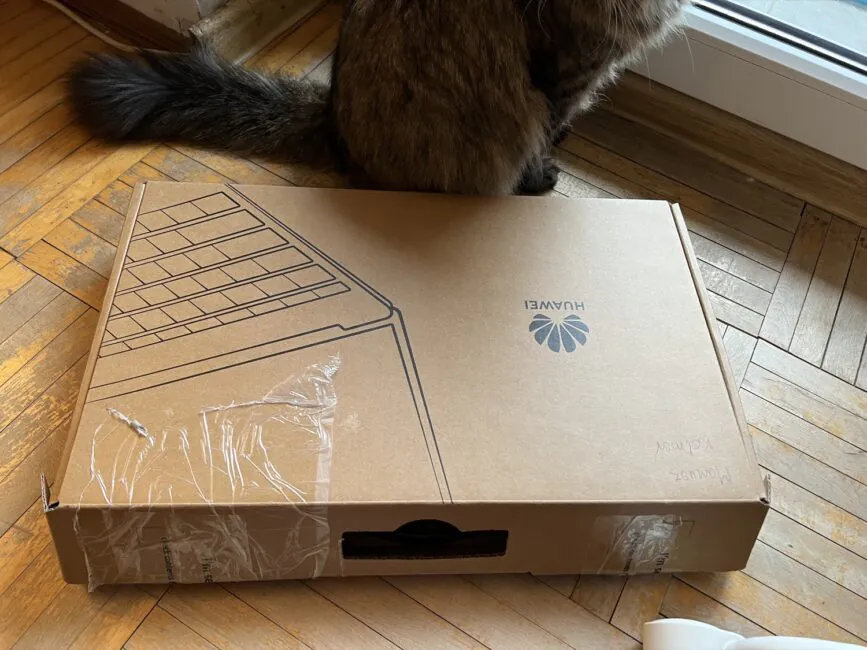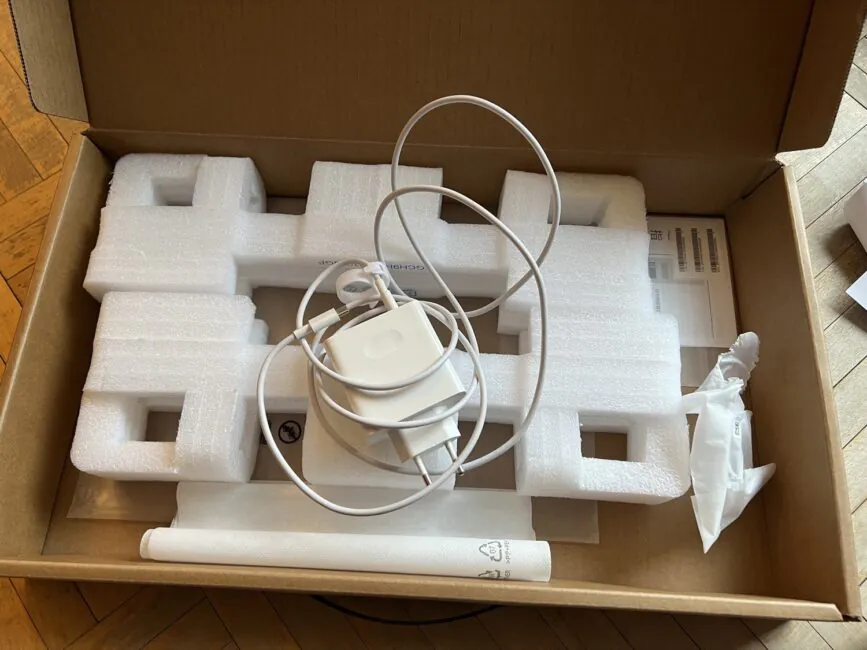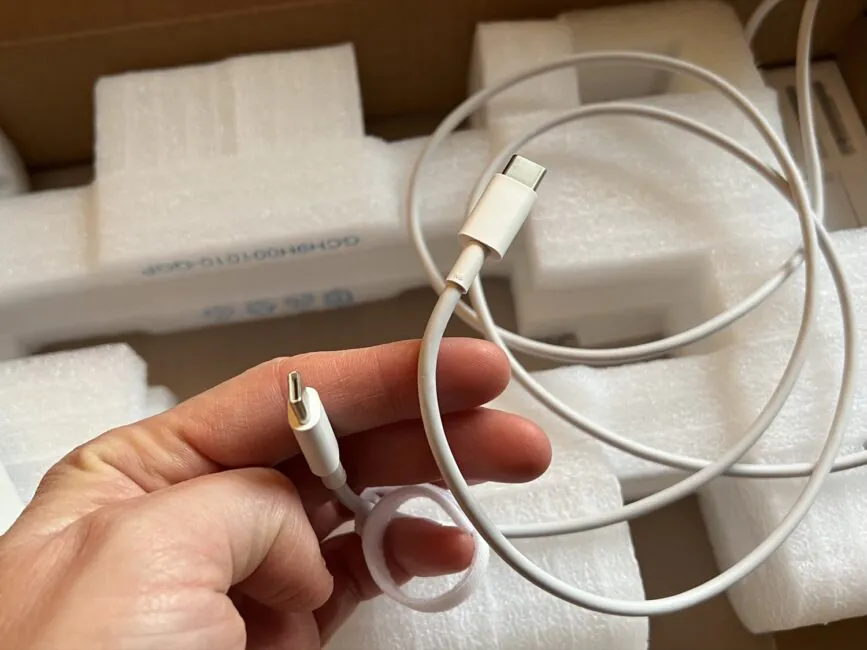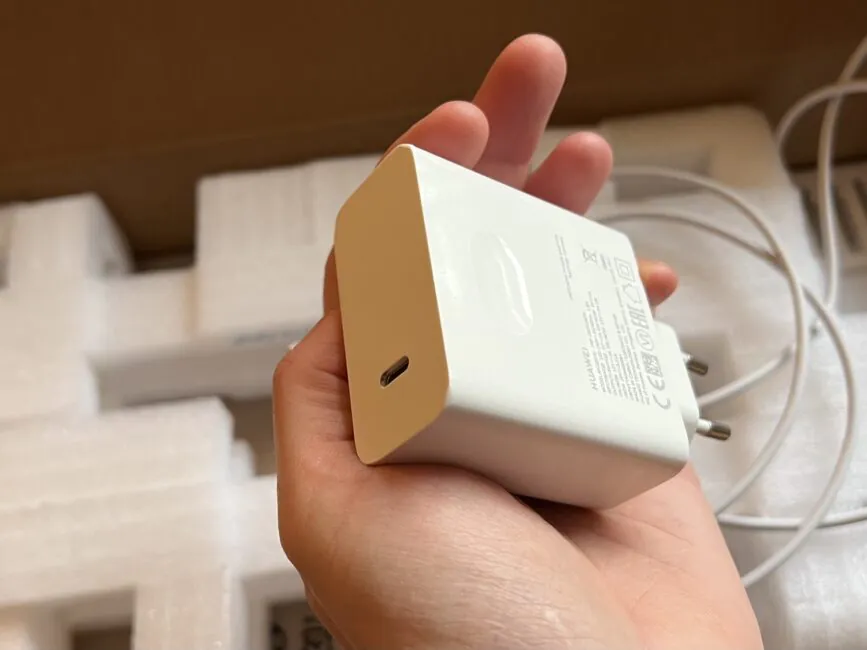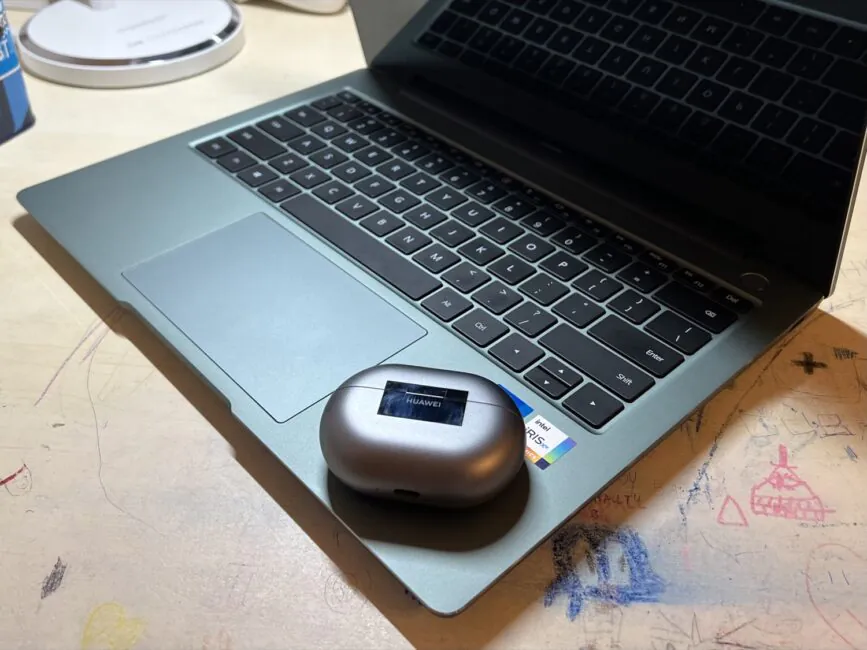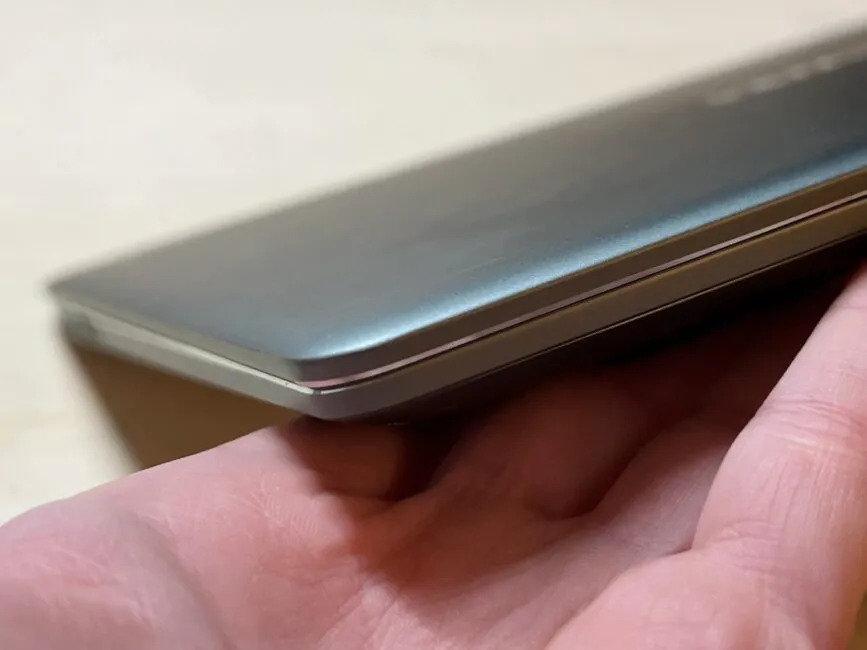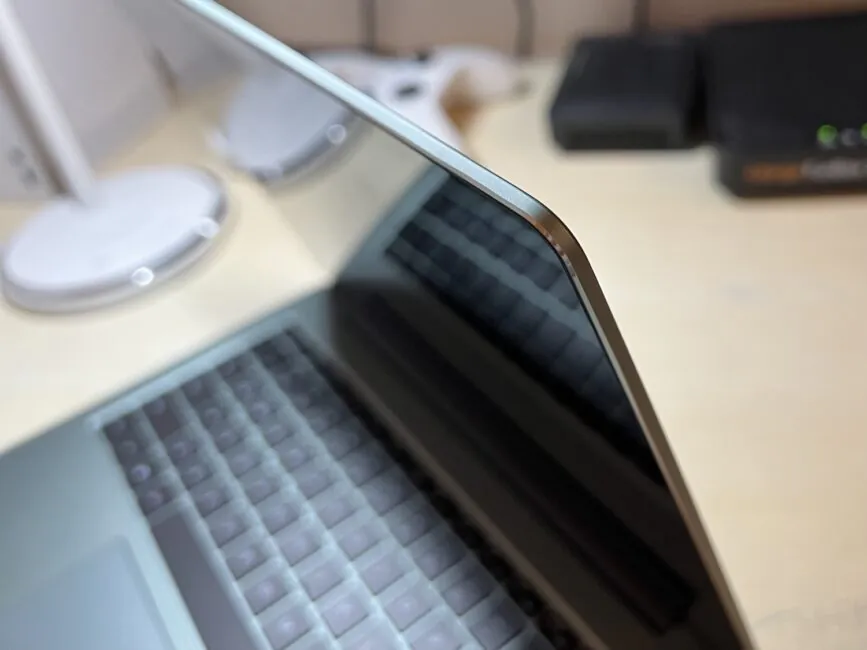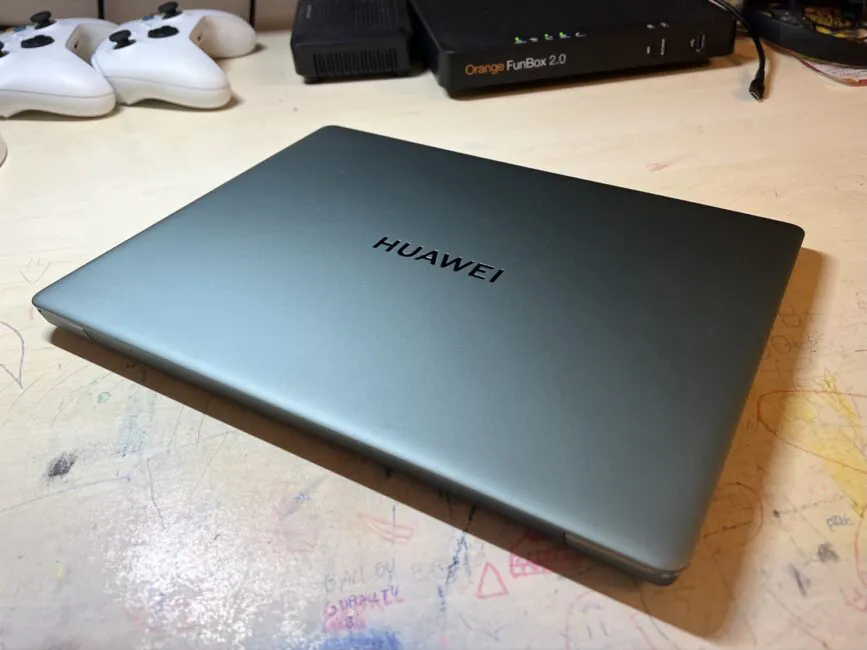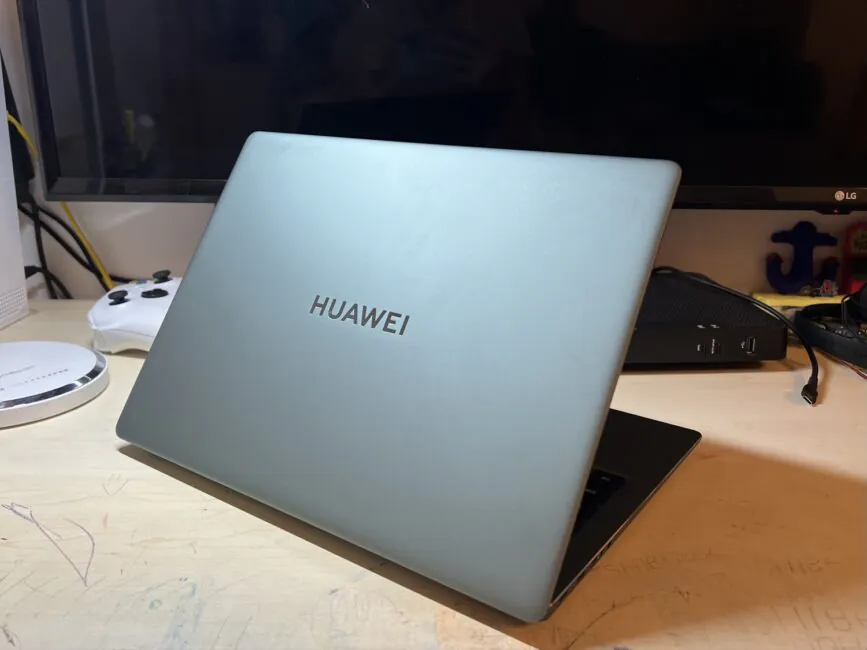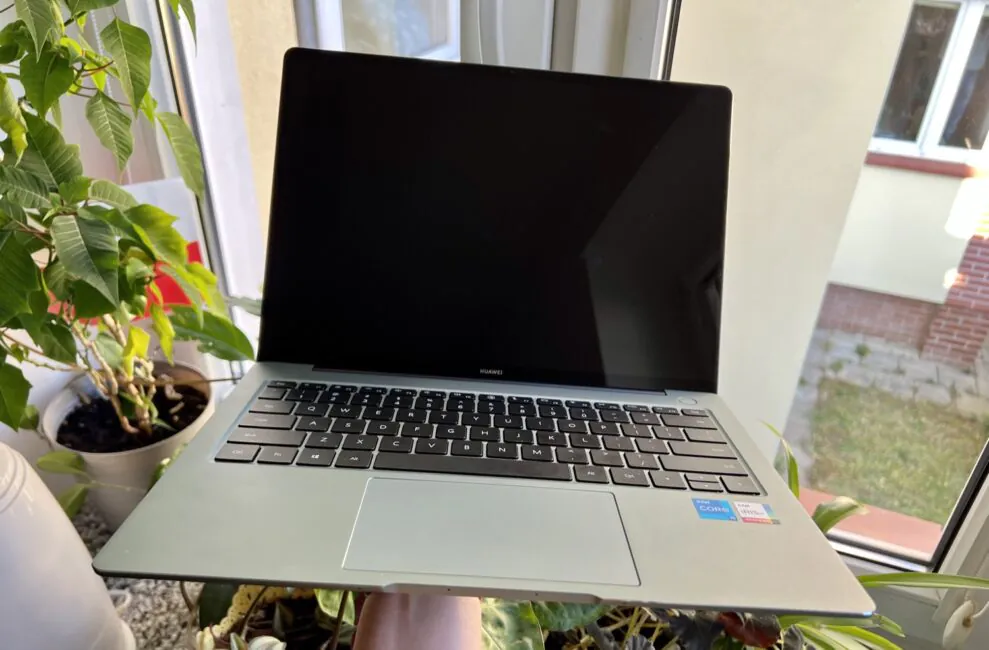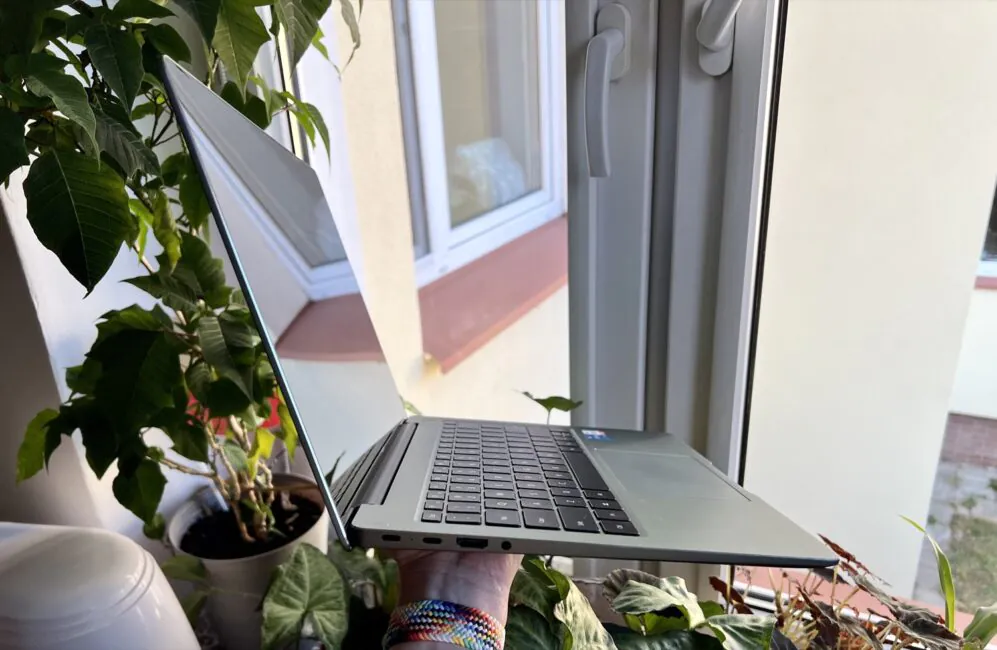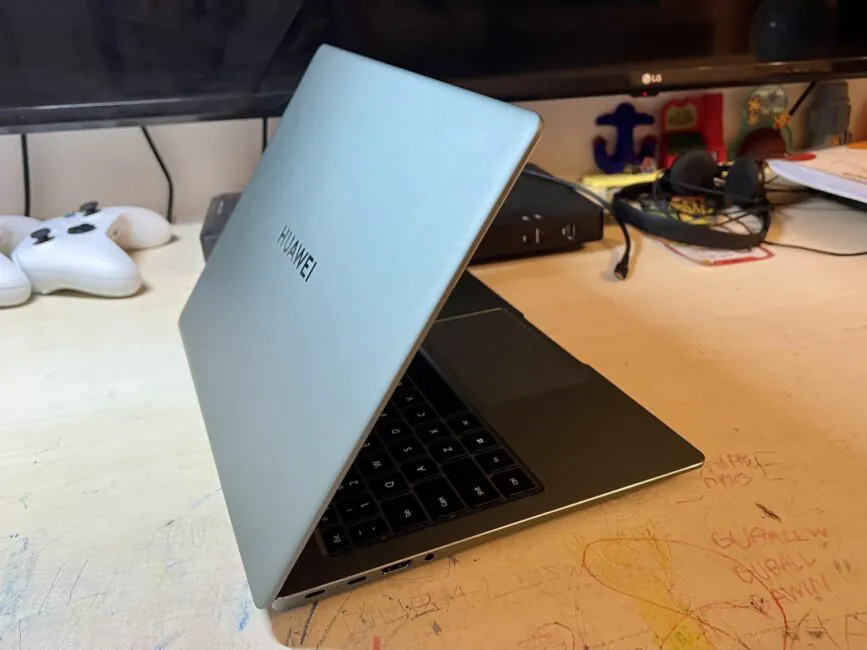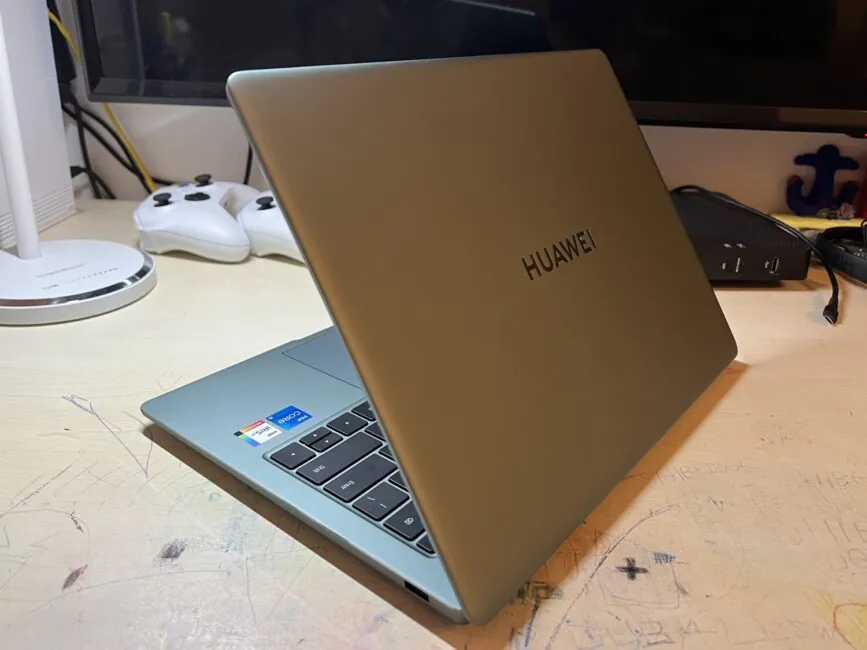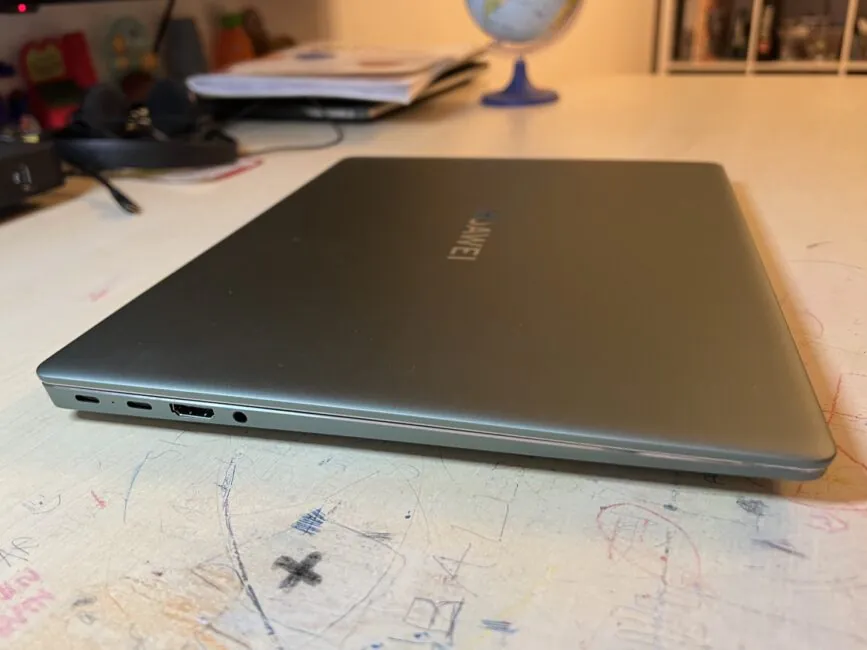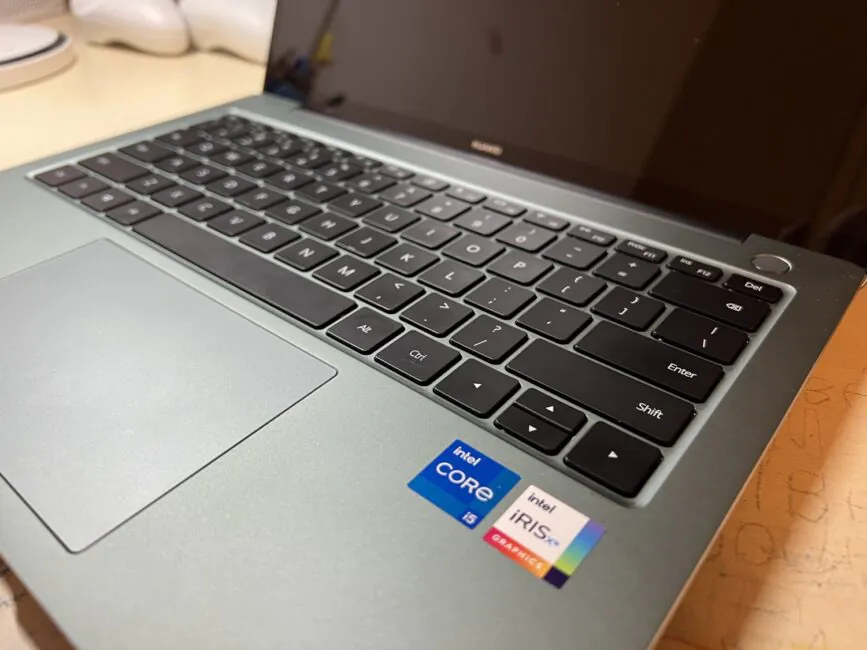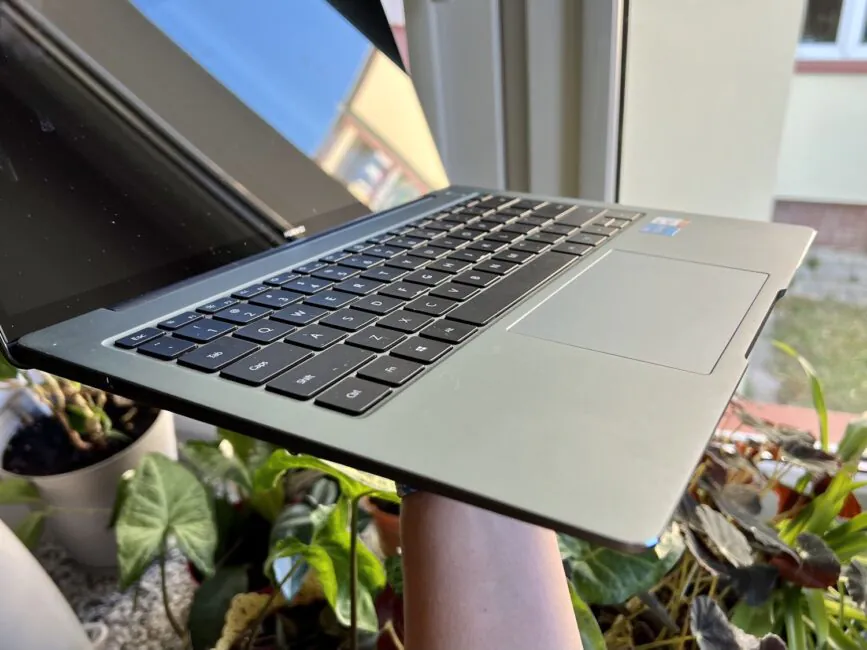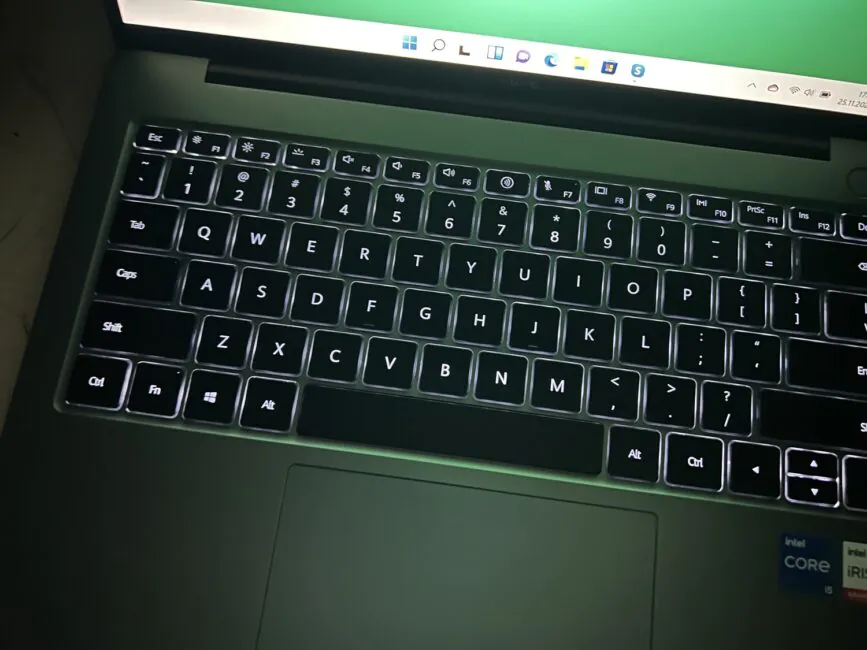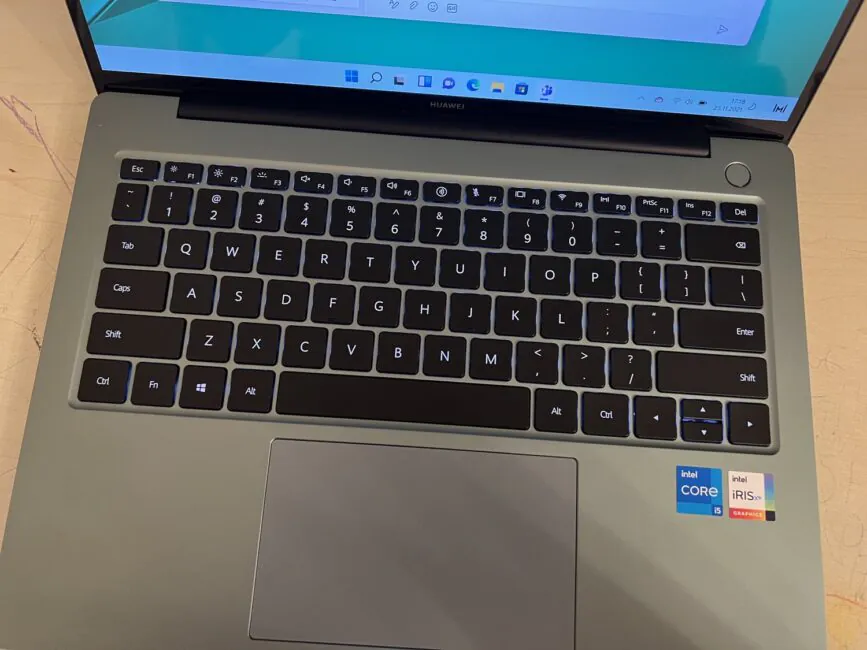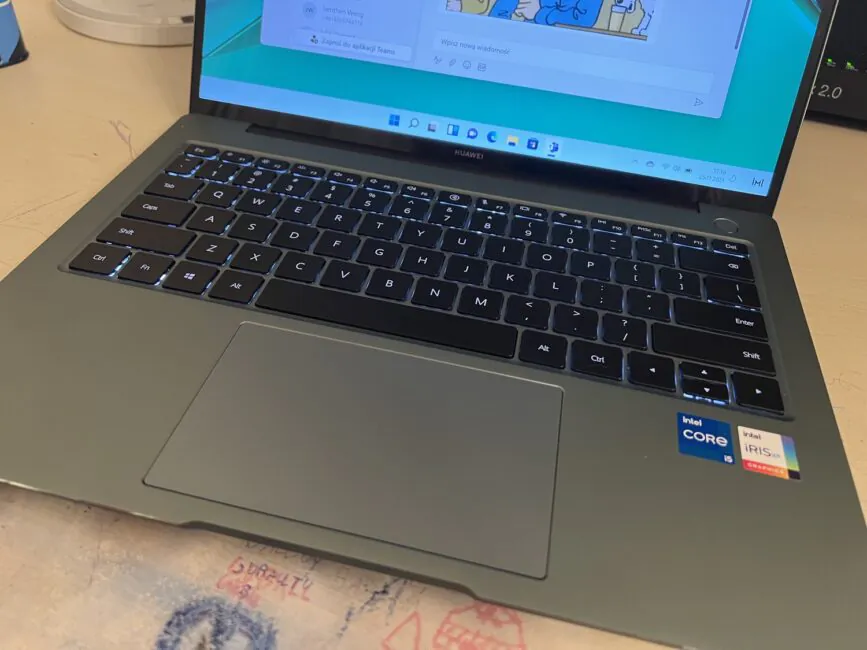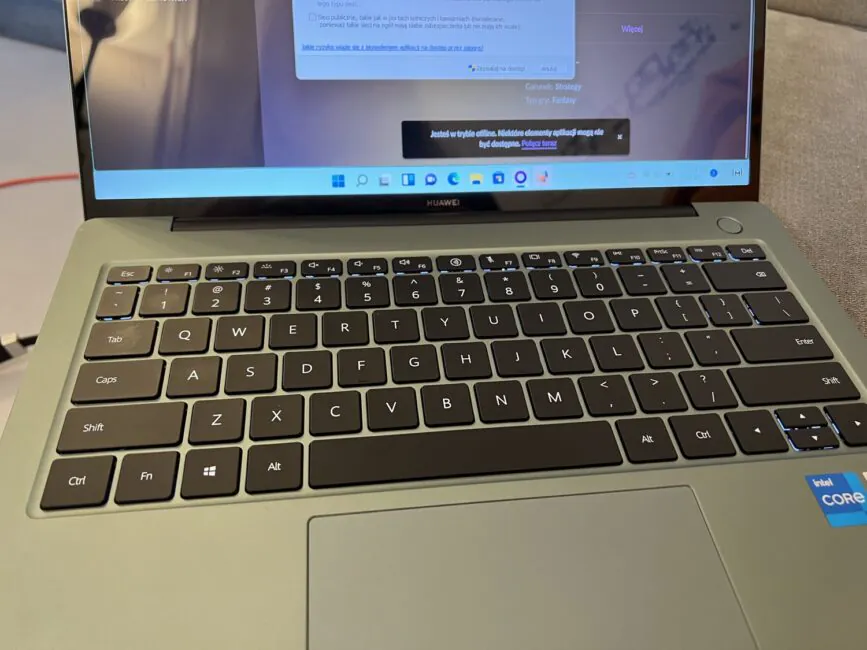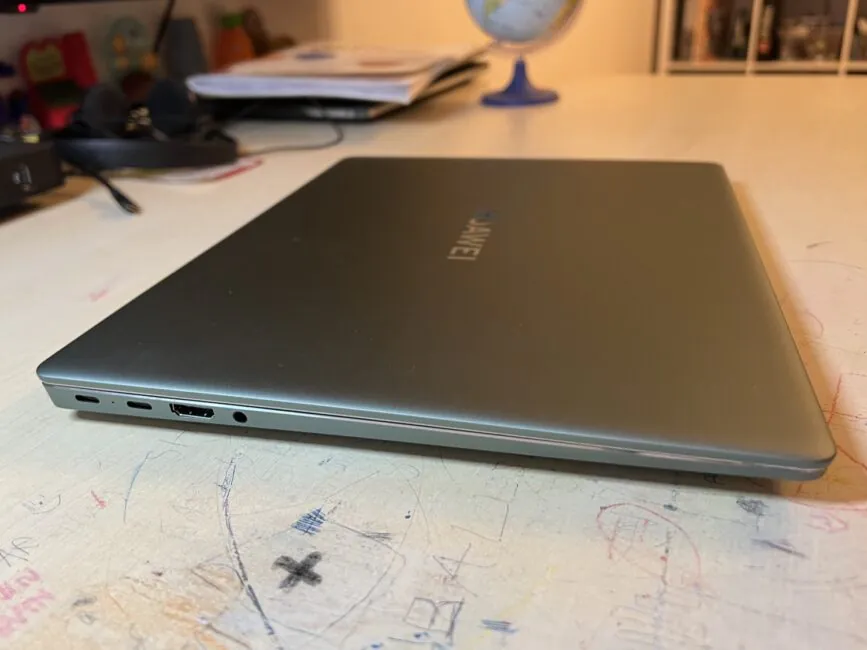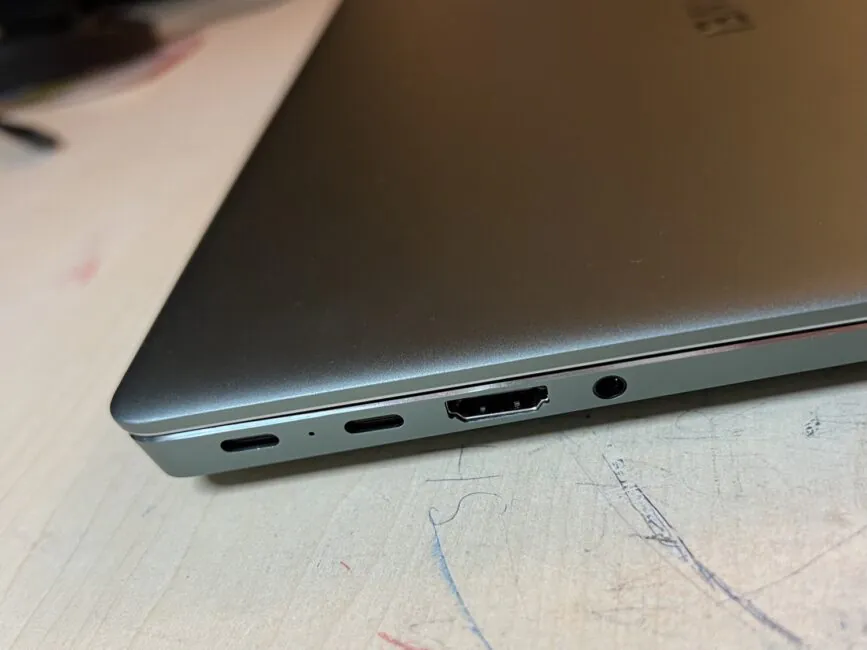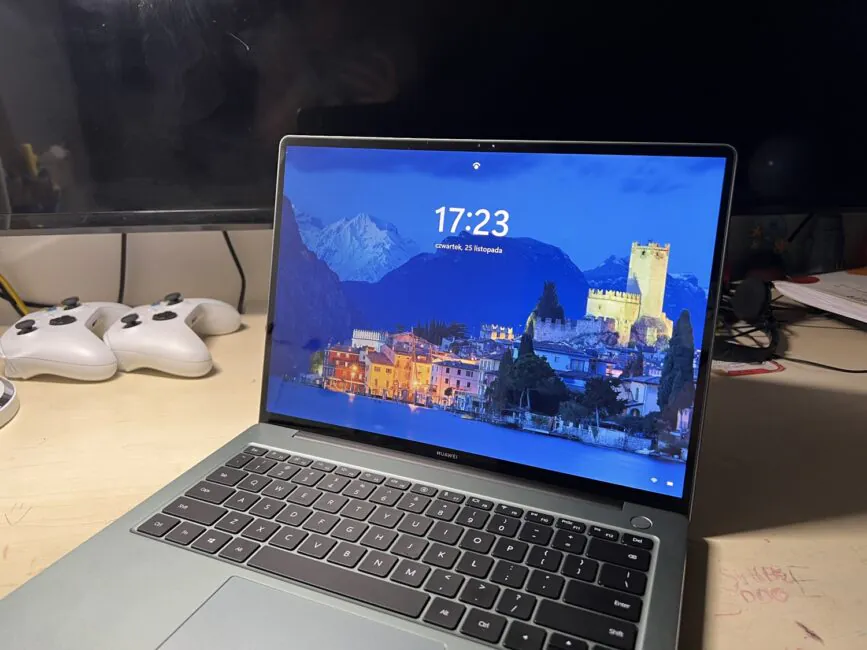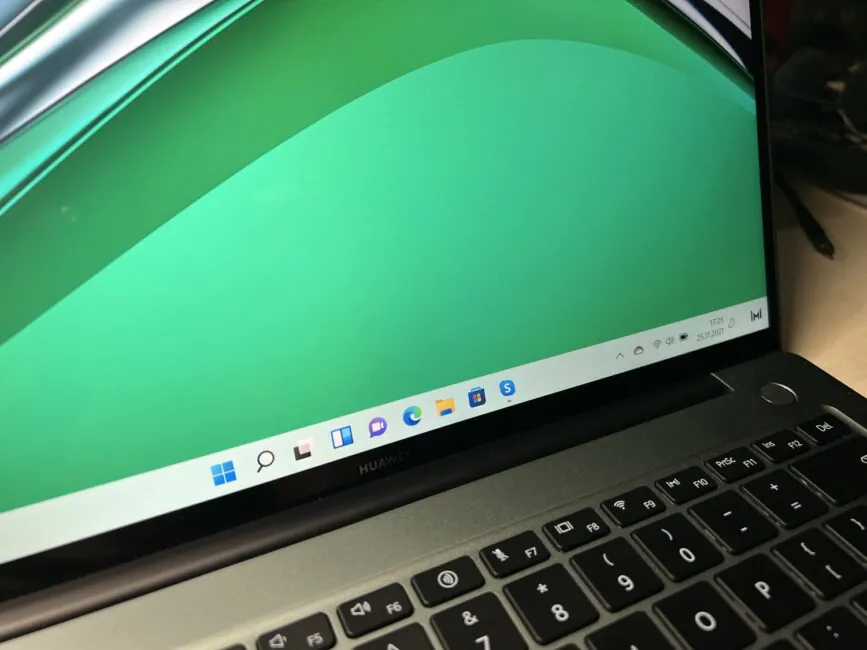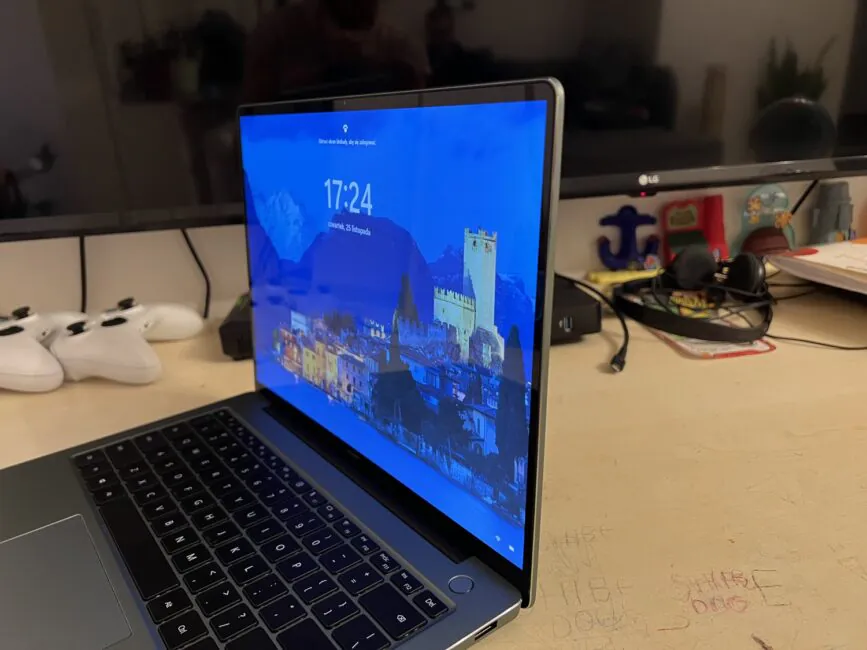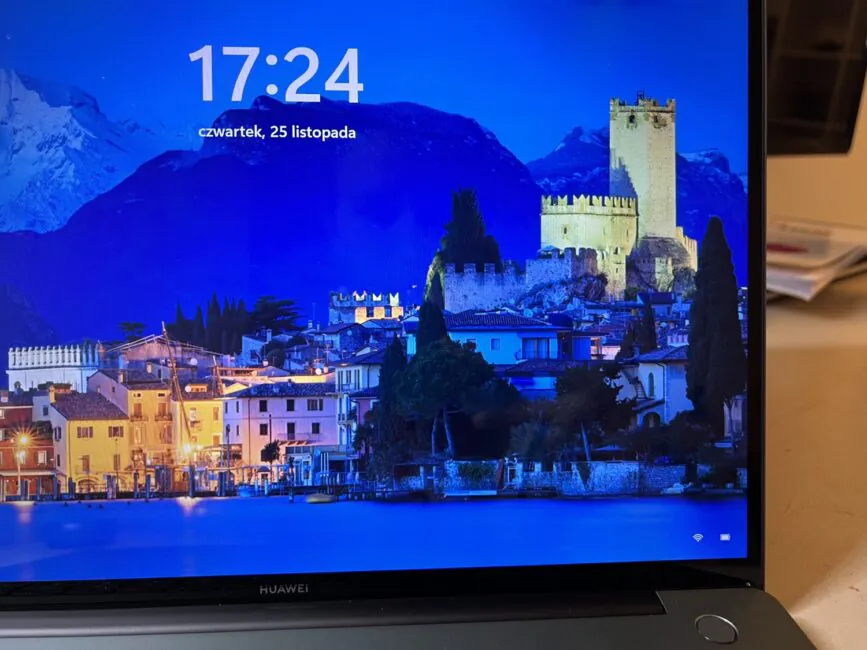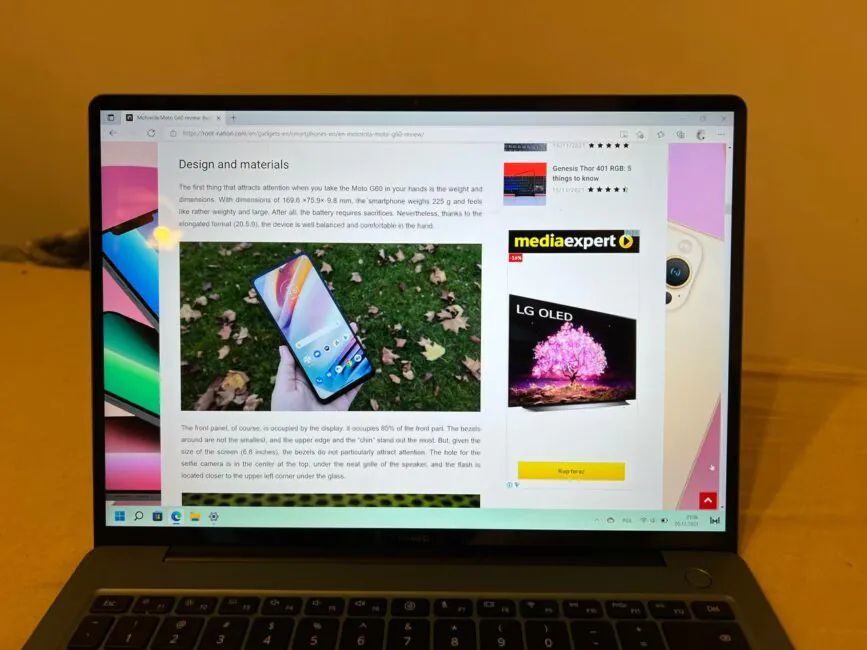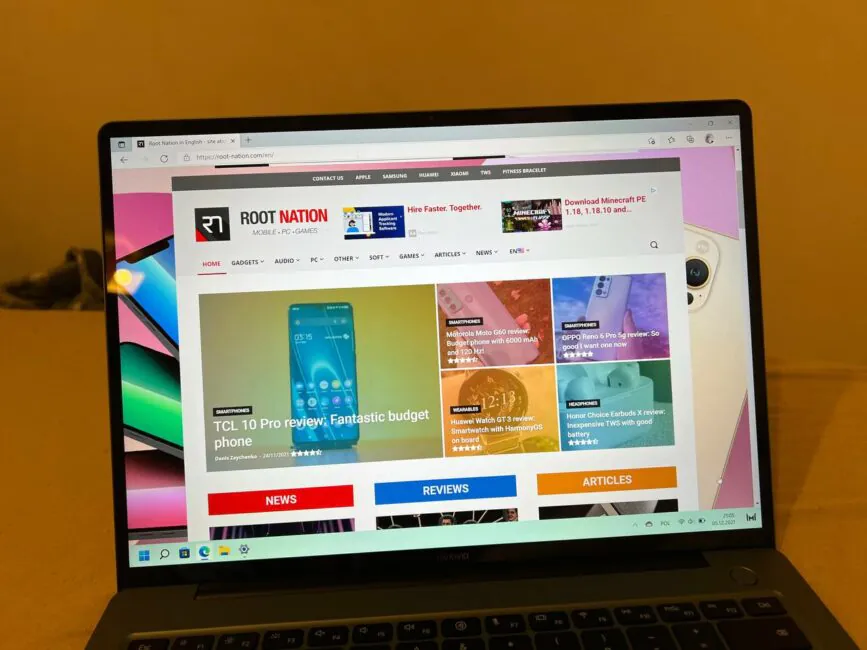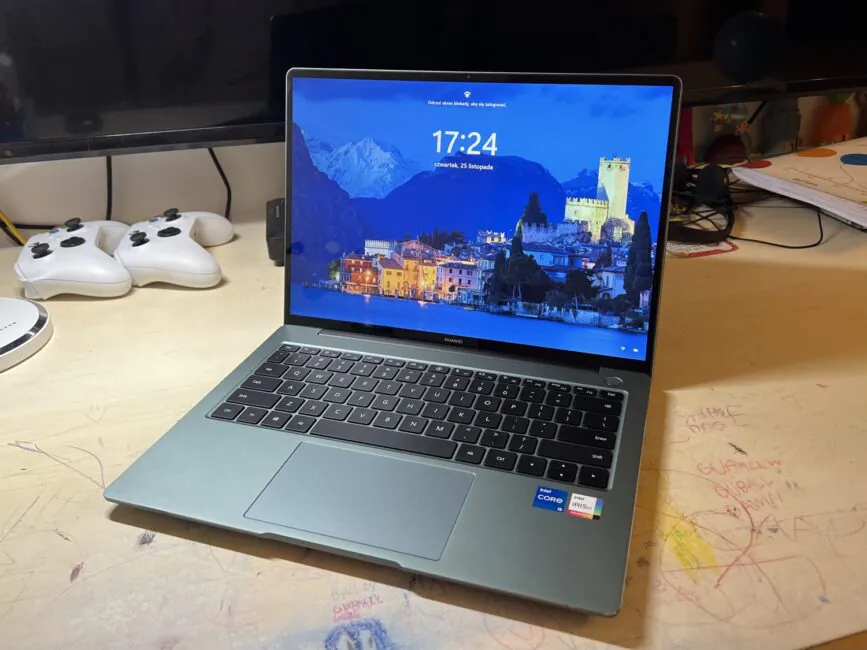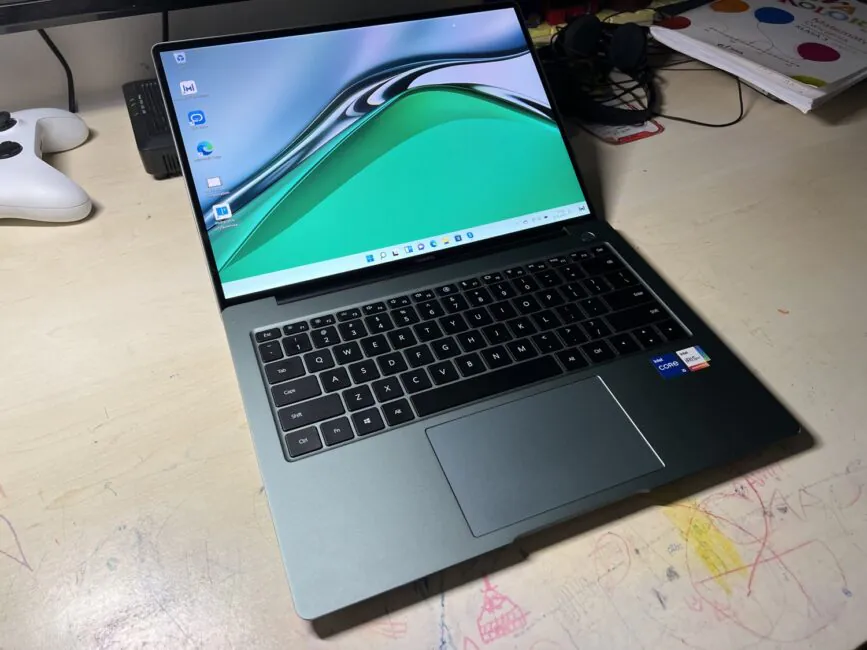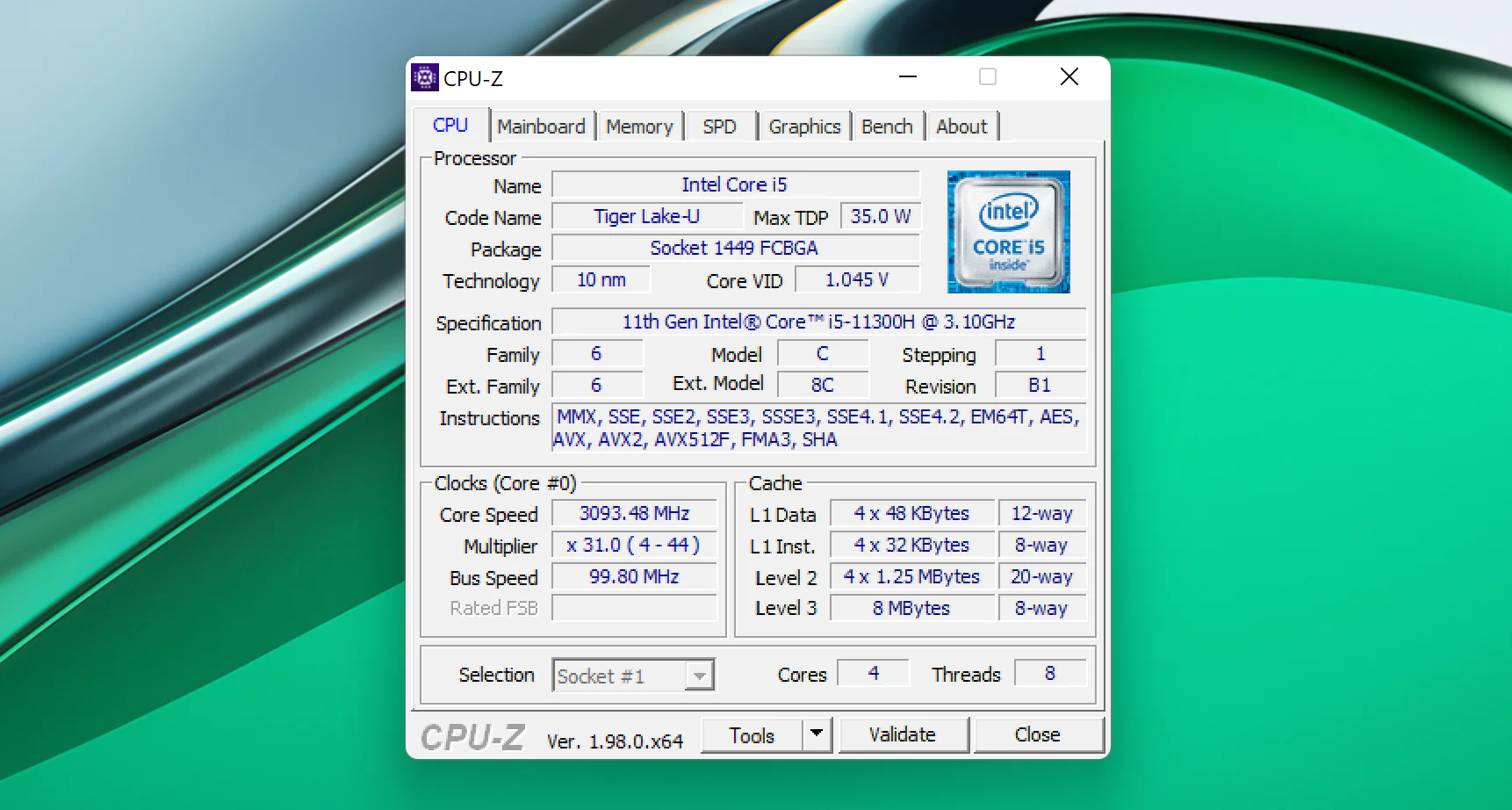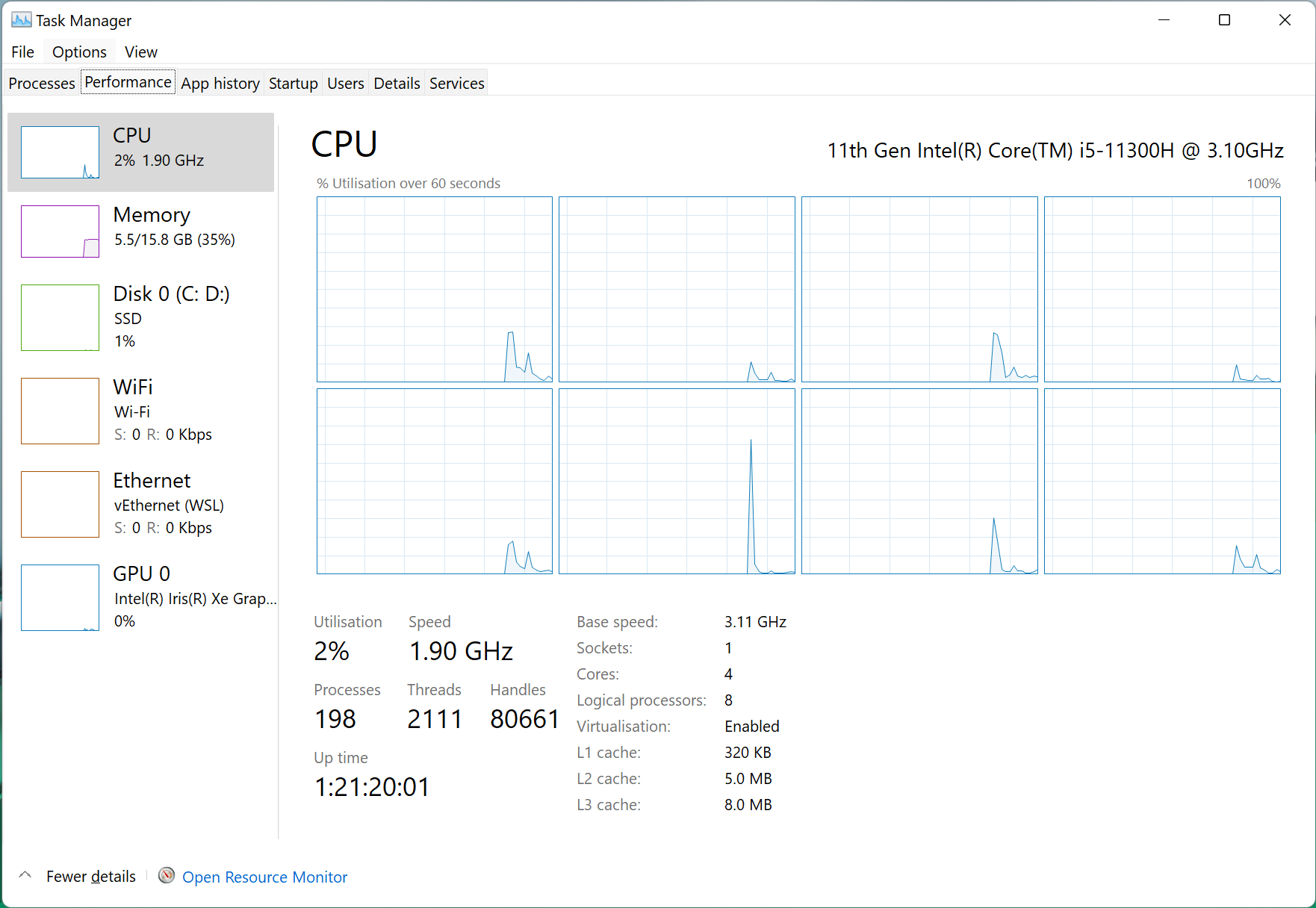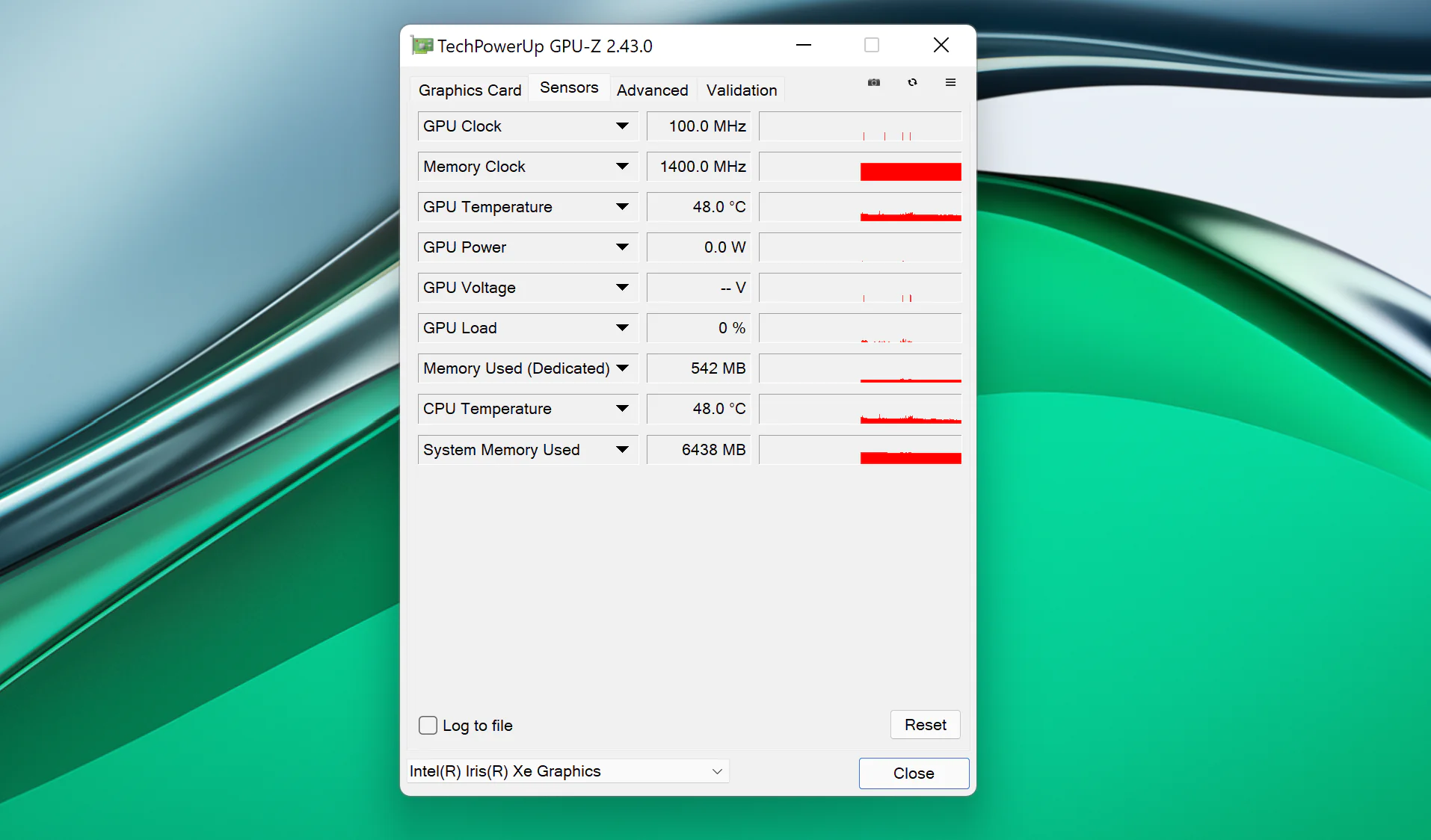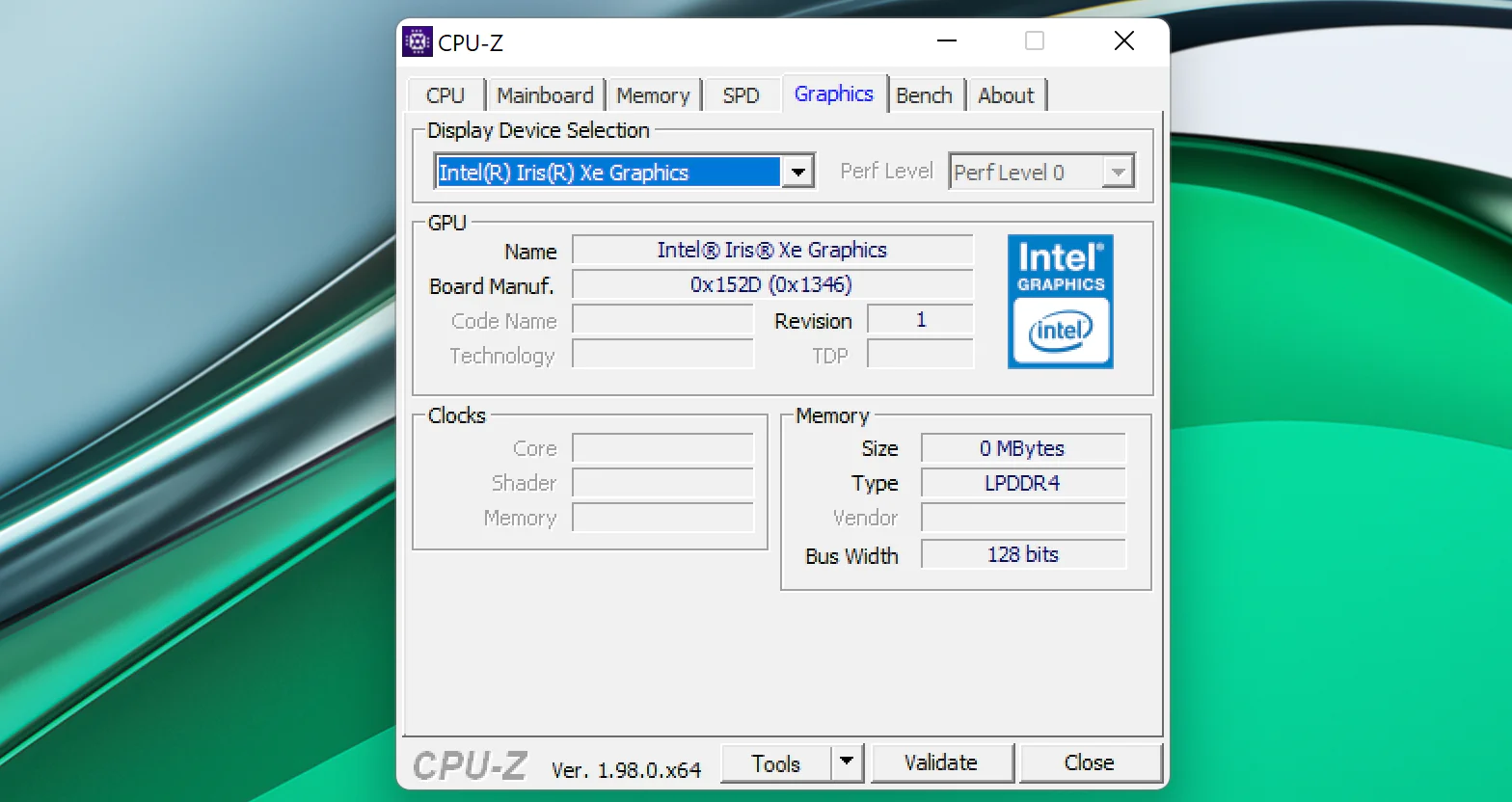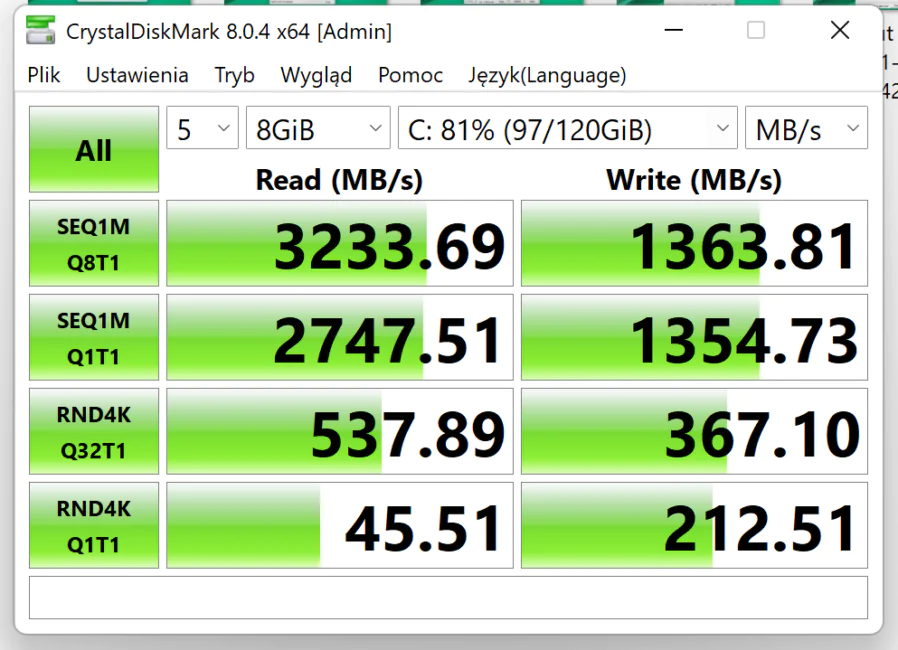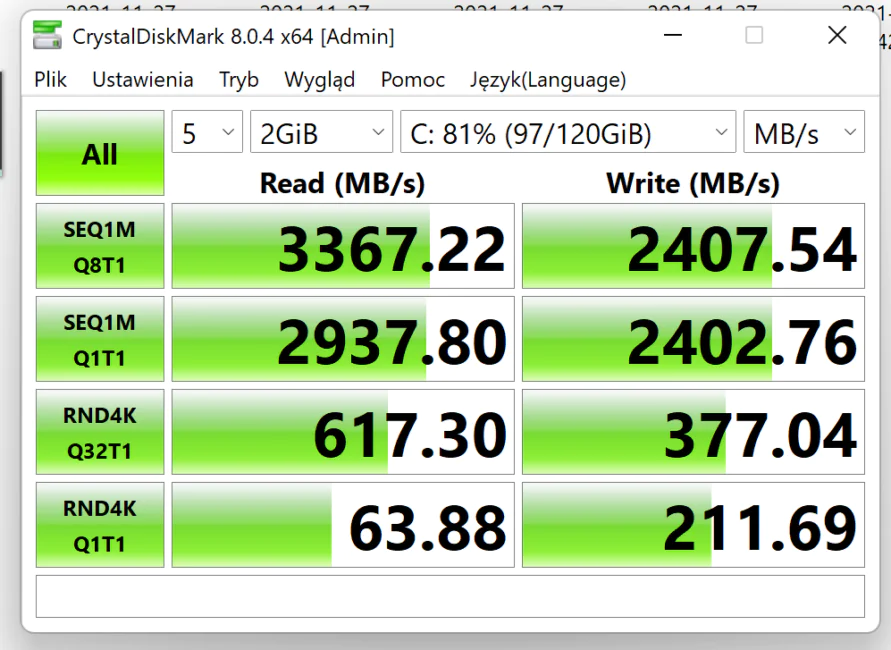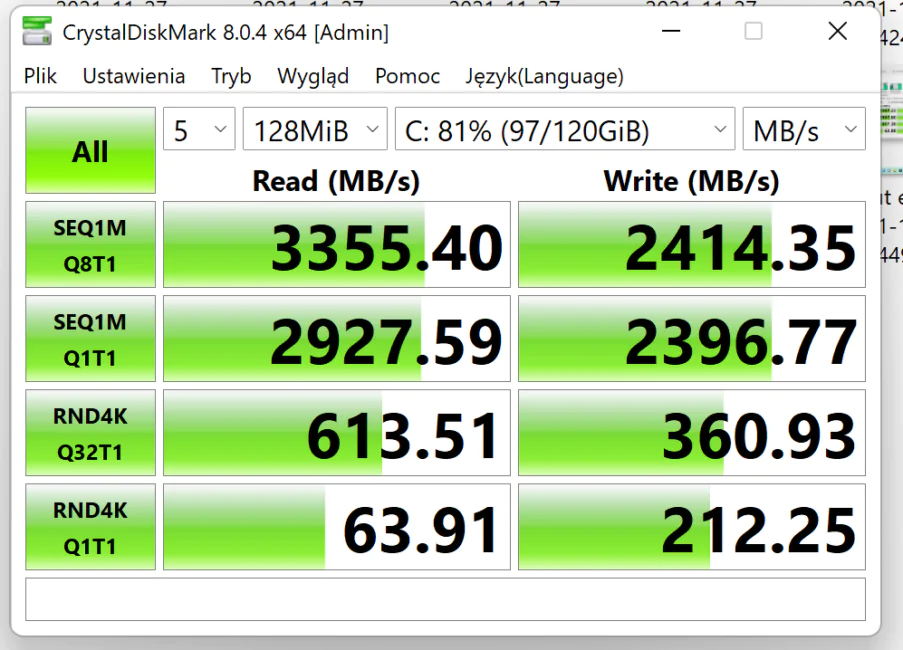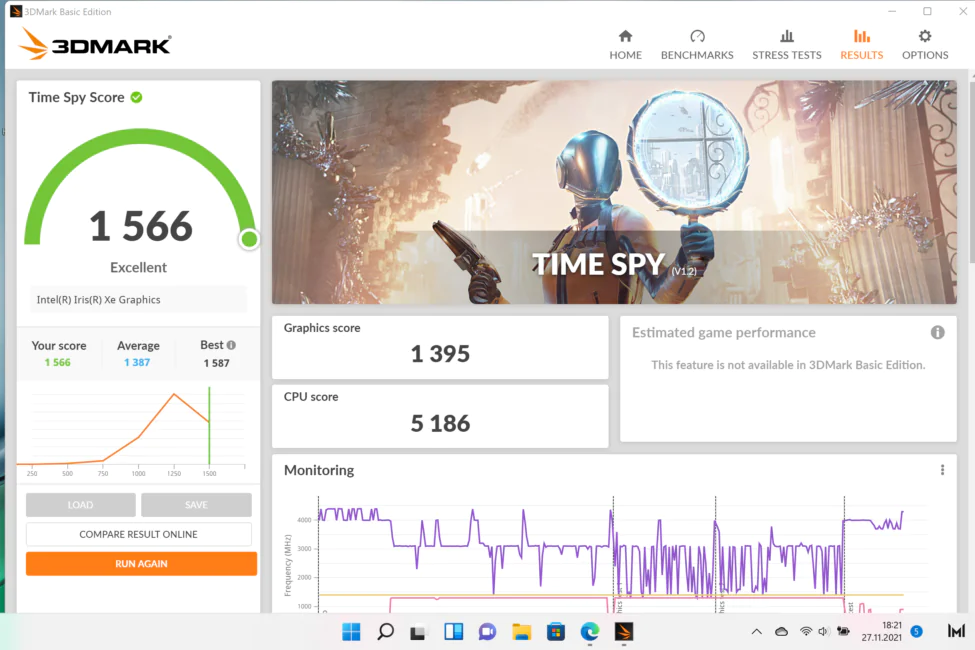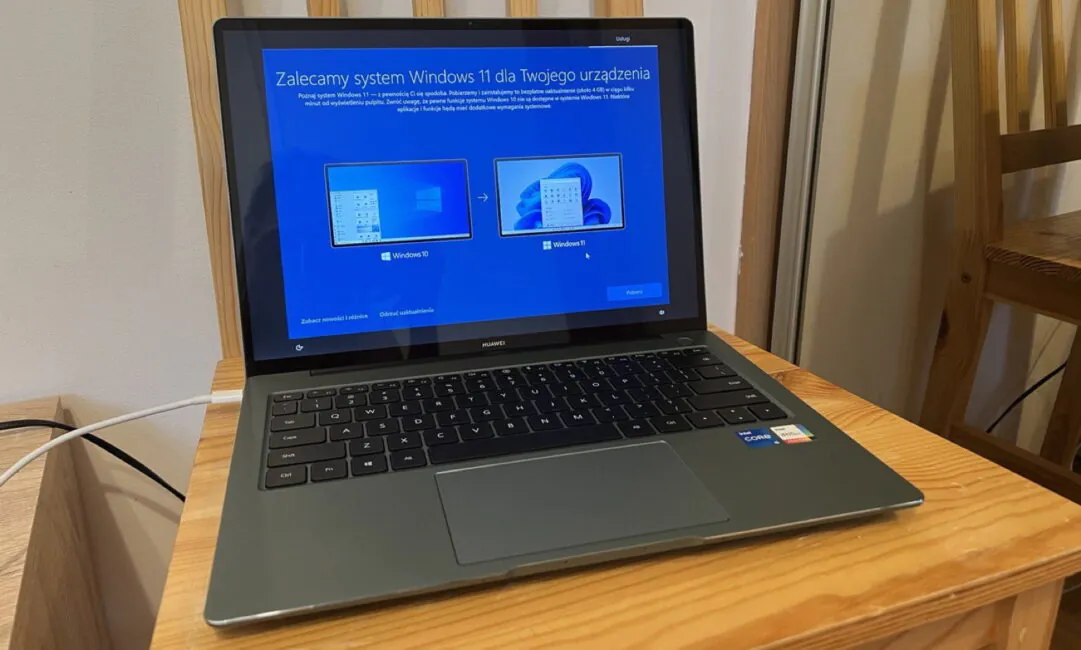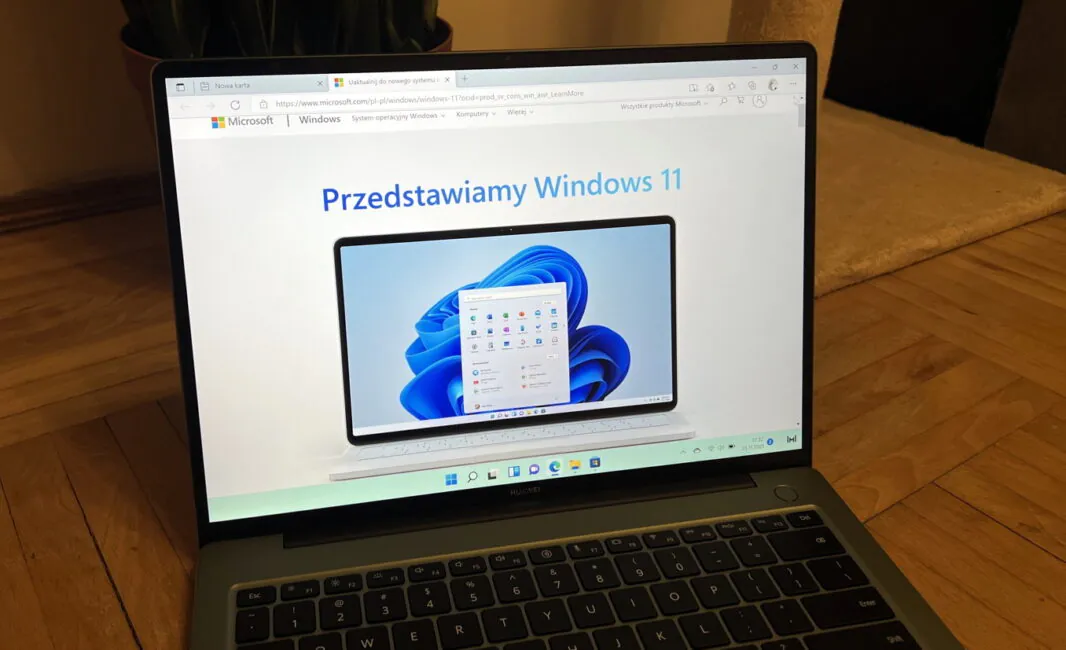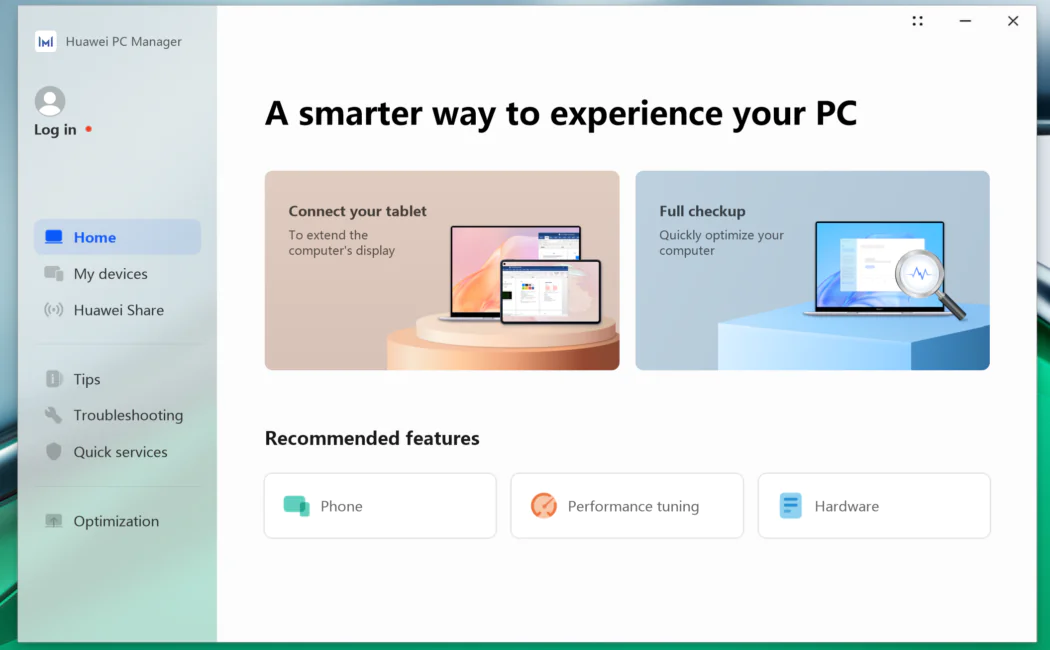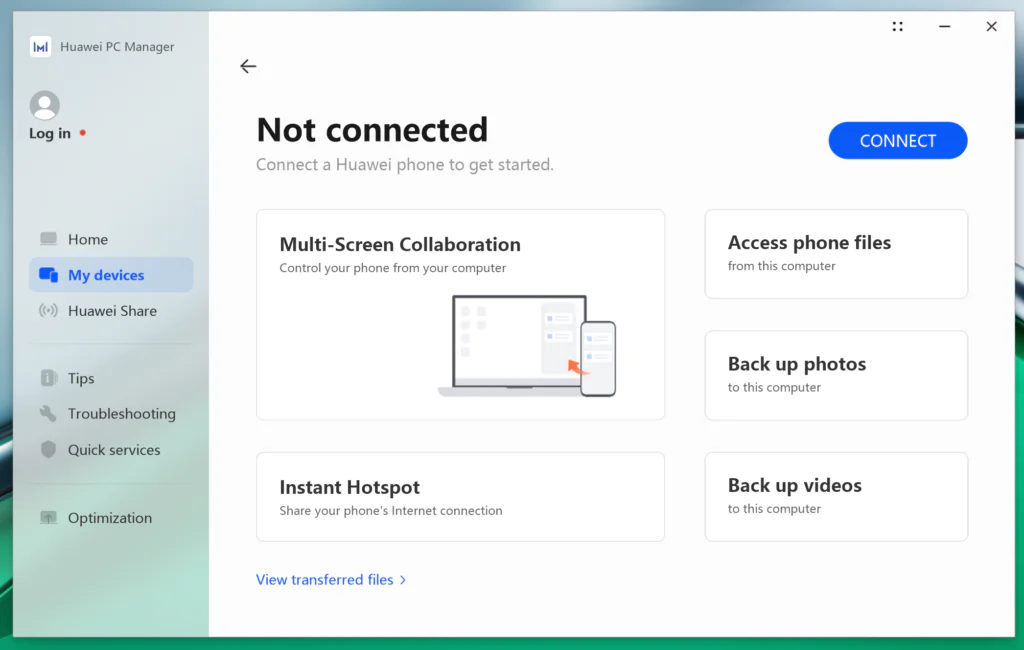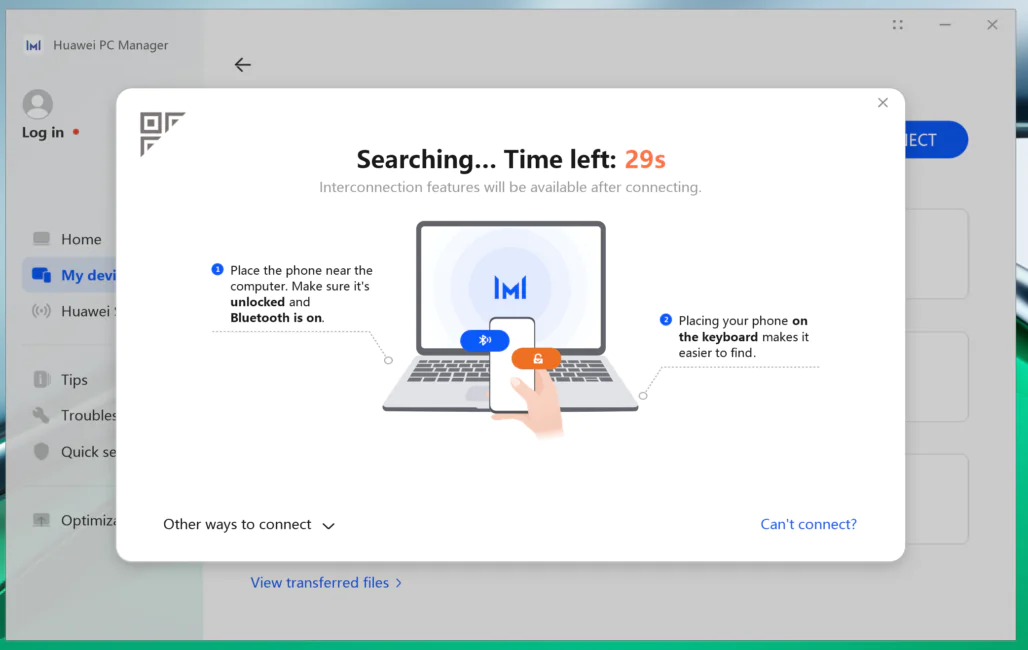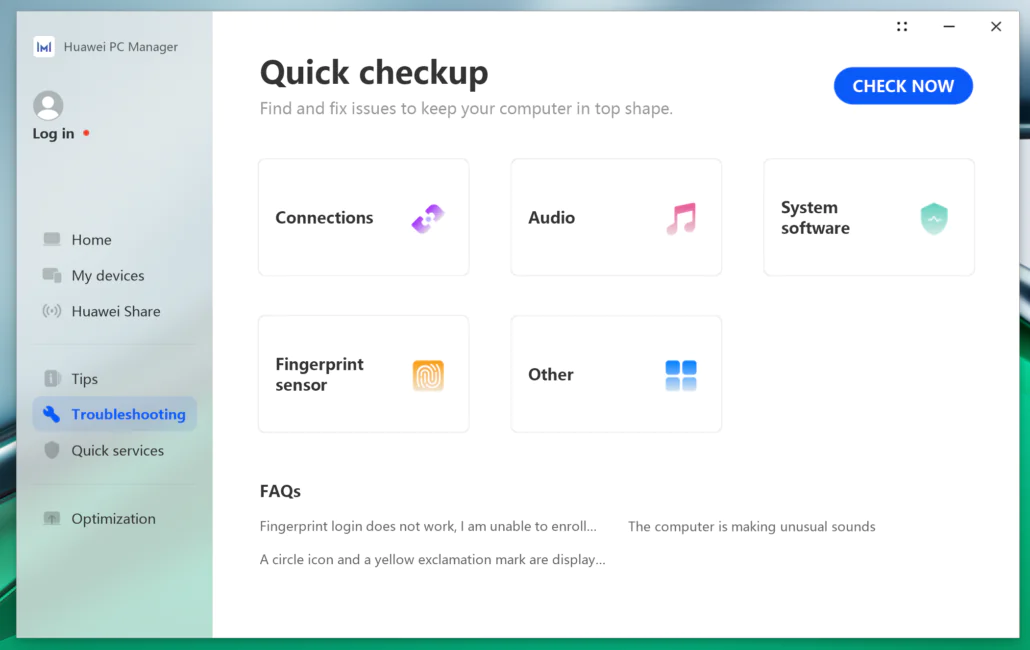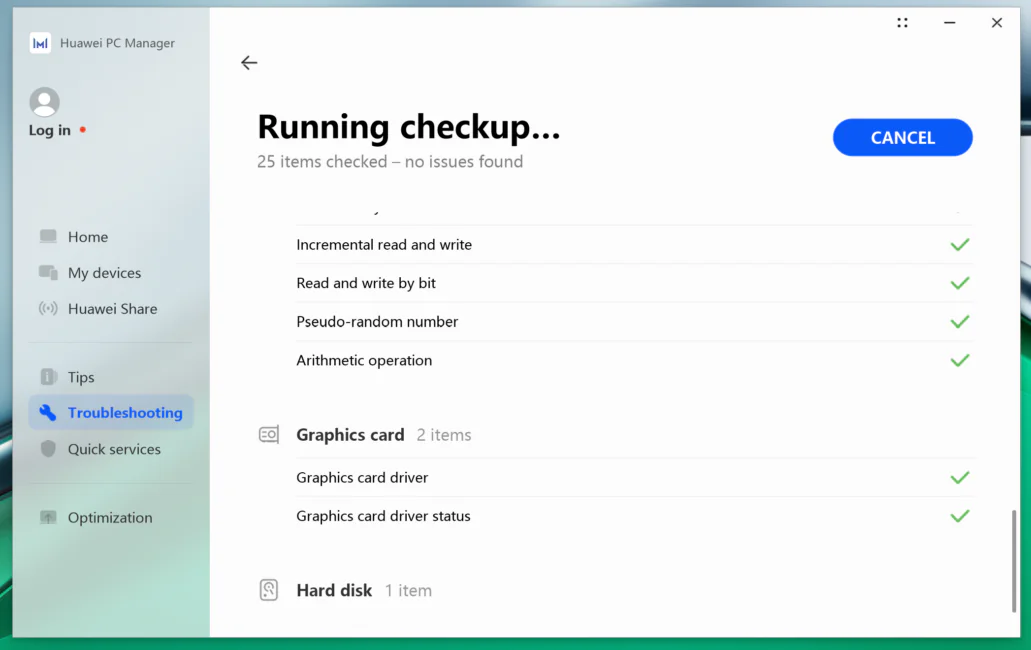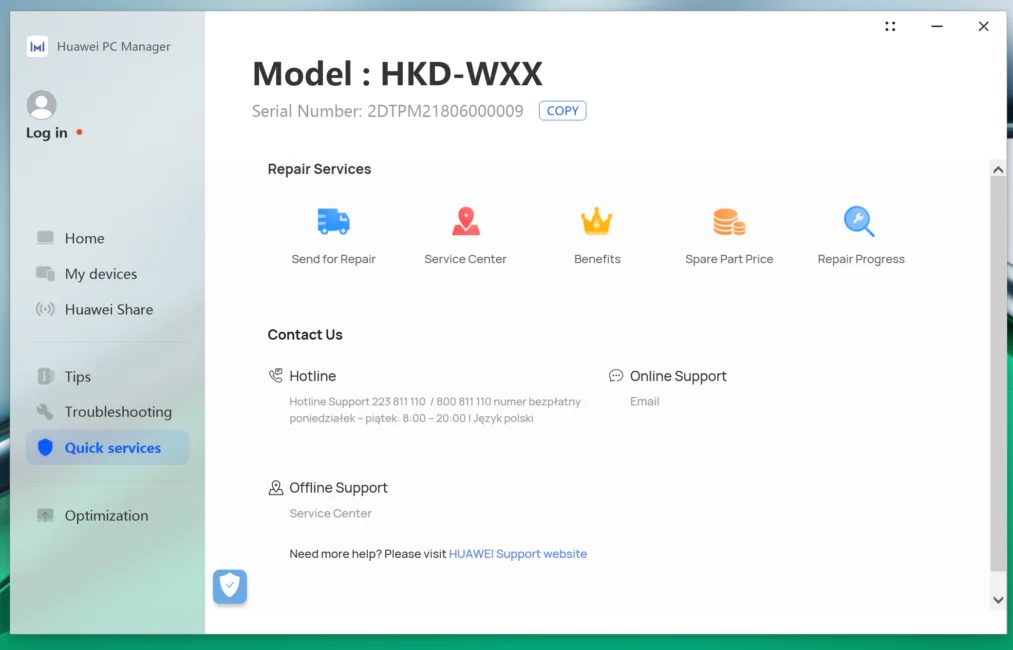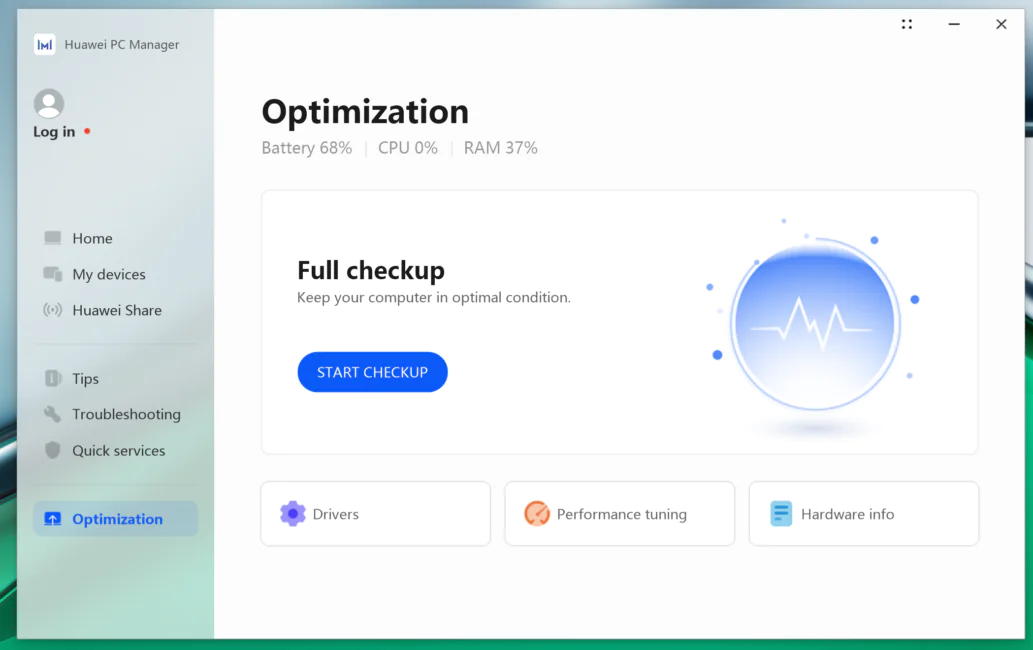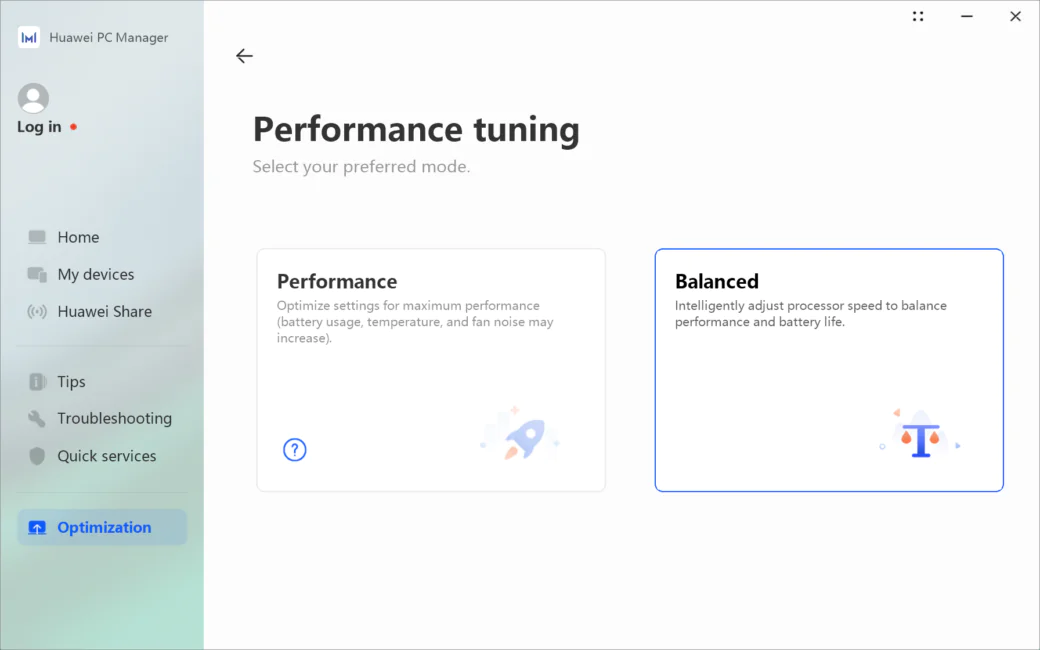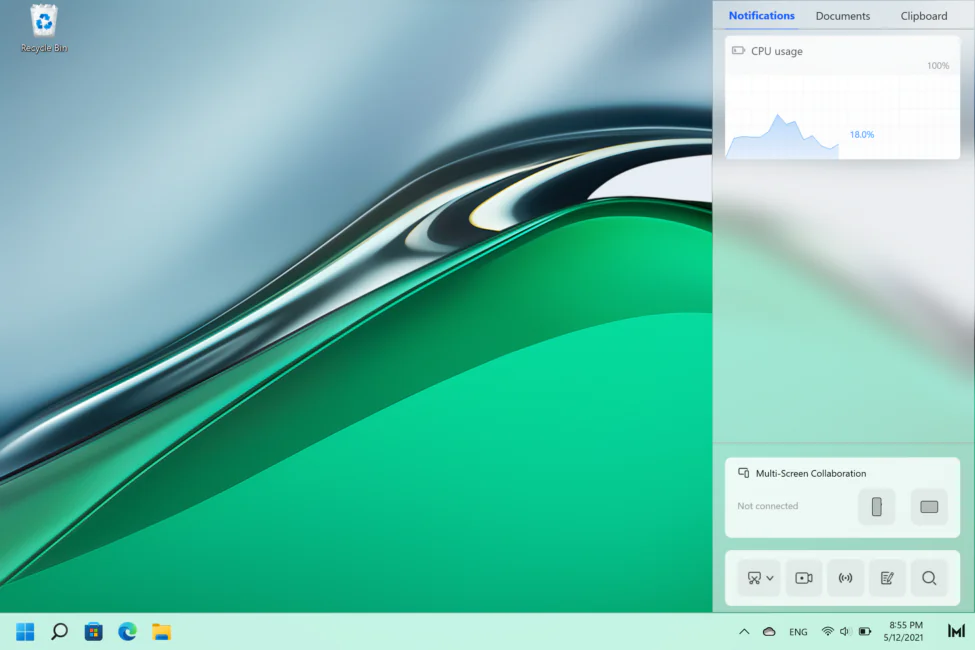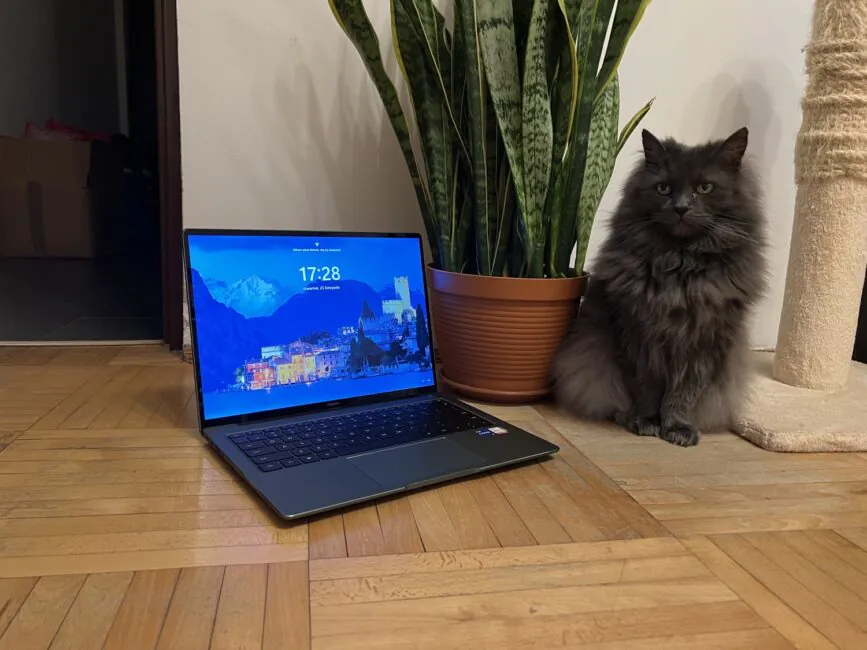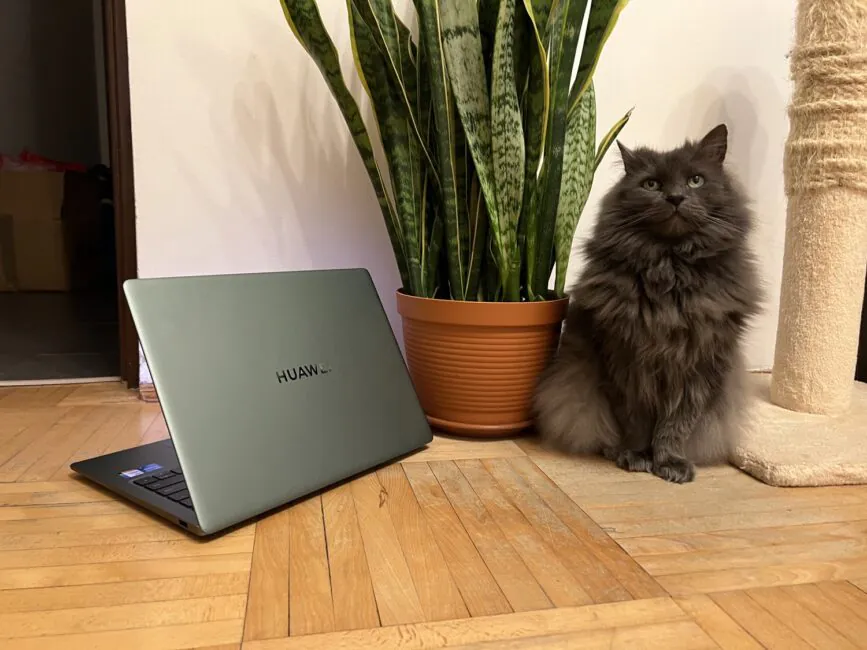© ROOT-NATION.com - Use of content is permitted with a backlink.
Since Huawei didn’t do well in the niche of Android smartphones, the company has been actively releasing and promoting other products. In particular, wireless headphones, monitors, PCs and, of course, laptops. Moreover, Huawei laptops tend to be very interesting. And the Huawei MateBook 14s is one of the freshest models. It is not cheap: the cost of our configuration is about $1200, and it can cost as high as $1800. Let’s get acquainted with the MateBook 14s in detail.
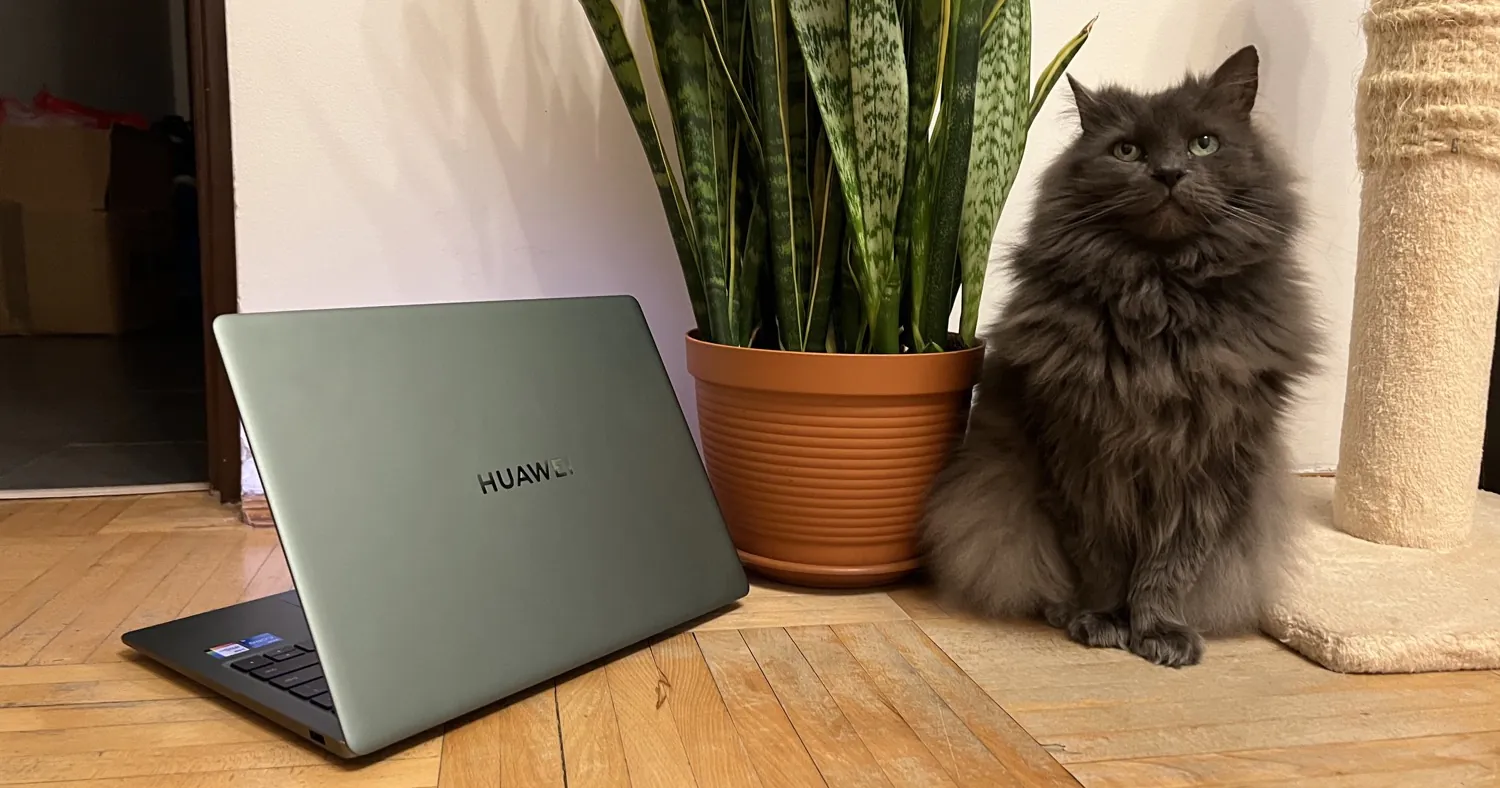
Full specifications of the Huawei MateBook 14s
- Processor: Intel Core i5-11300H (35 W), 3.1 GHz (up to 4.4 GHz in Boost mode), 4 cores/8 bands, 10 nm, cache 8 MB;
- RAM: 16 GB LPDDR4X. 3733 MHz, CL32-34-34, Dual Channel;
- Video chip: built-in Intel Iris Xe 80 EU, 1300 MHz;
- Storage: 1 TB SSD M.2 NVMe PCIe gen 3. ×4;
- Screen: 14.2′′, 3:2, LTPS, 2520×1680 pixels, 400 nits, 90 Hz, touch (up to 10 simultaneous touches), glossy;
- Battery: Li-pol, 60 Wh, 4 sections;
- Dimensions, W×D×H: 314 x 230 x 16.7 mm;
- Weight: 1.43 kg;
- Body material: anodized aluminum;
- OS: Windows 10 Home, with the ability to upgrade to Windows 11 during the first configuration;
- Keyboard: membrane, illuminated;
- Touchpad: matte, smooth, supports gestures and multiple touches;
- Data transmission: Wi-Fi 6 802.11 a/b/g/n/ac/ax (Intel AX201), Bluetooth 5.1;
- Connectors:
- 1×USB A 3.2 gen.1;
- 2×USB C 3.2 gen. 2 (DisplayPort 1.4, PD 3.0);
- 1×minijack 3.5 mm;
- 1×HDMI 1.4;
- Additionally: 0.9 MP 720p webcam, IR face scanners, 4 speakers, 4 microphones, Huawei audio, Huawei’s proprietary PC Manager.
I will add that there is a more affordable MateBook 14s model with 8 GB of RAM, as well as a more powerful one with a Core i7-11370H processor and a 1 TB drive. We will talk about prices later
Read also: Huawei Watch GT 3 review: Smartwatch with HarmonyOS on board
What’s in the box
In the compact box, in addition to the laptop itself, you will find a cable with two USB-C connectors and a 90 watt charger. It looks almost like a smartphone set.
Design
The laptop is nice, but its design isn’t anything to wrote home about. The laptop looks modern and good for its price level, but nothing special. In many ways it resembles other models of the MateBook series, as well as the Apple MacBook. But what I liked was the color of the case. A model with a Core i5 processor came to us for the test, and it is available in dark green. To be honest, it’s difficult to capture this shade with a camera, it seems gray. But if you put something gray on the laptop, then you immediately notice the difference. There are also gray models, but they don’t look so interesting compared to green.
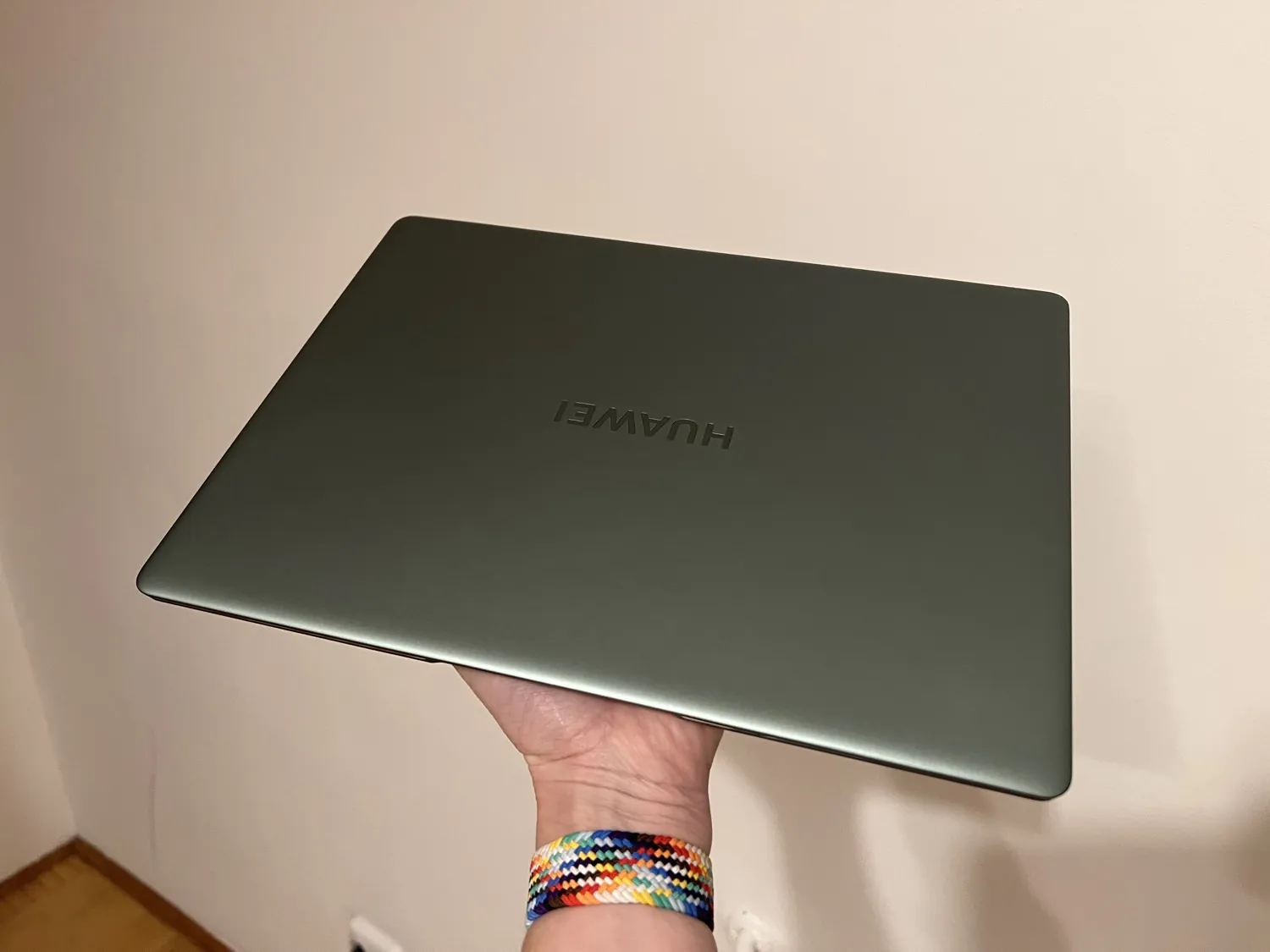
The laptop case is made of brushed anodized aluminum. The metal is durable, cold, not subject to scratches. The edges of the case are beveled and polished to a shine.
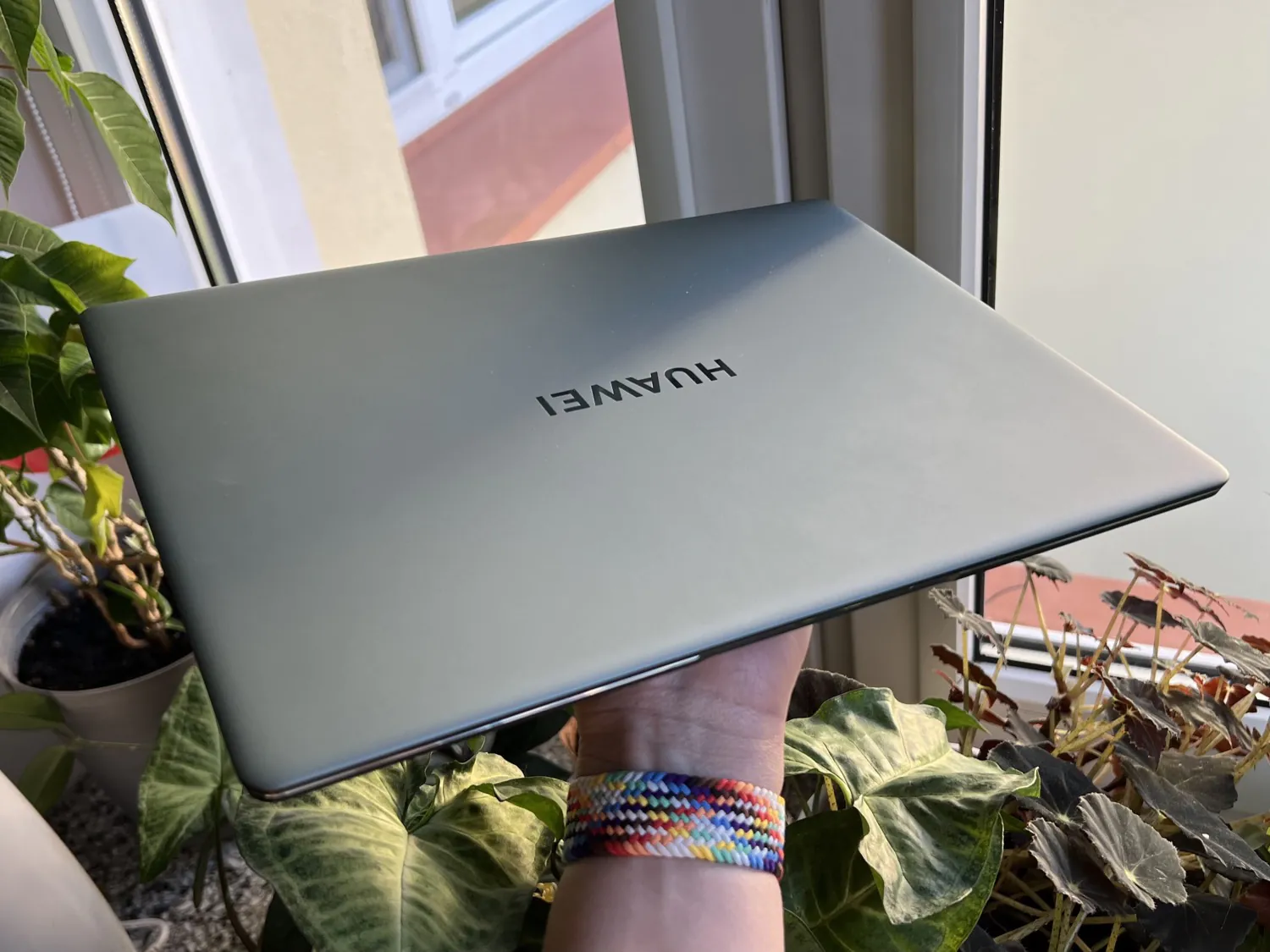
The HUAWEI inscription on the laptop cover is also polished and shiny.
The bottom panel has rounded edges and two wide plastic stand legs. They slightly lift the laptop above the surface, so that it cools better. Also on the back panel there are speaker grilles and ventilation holes.
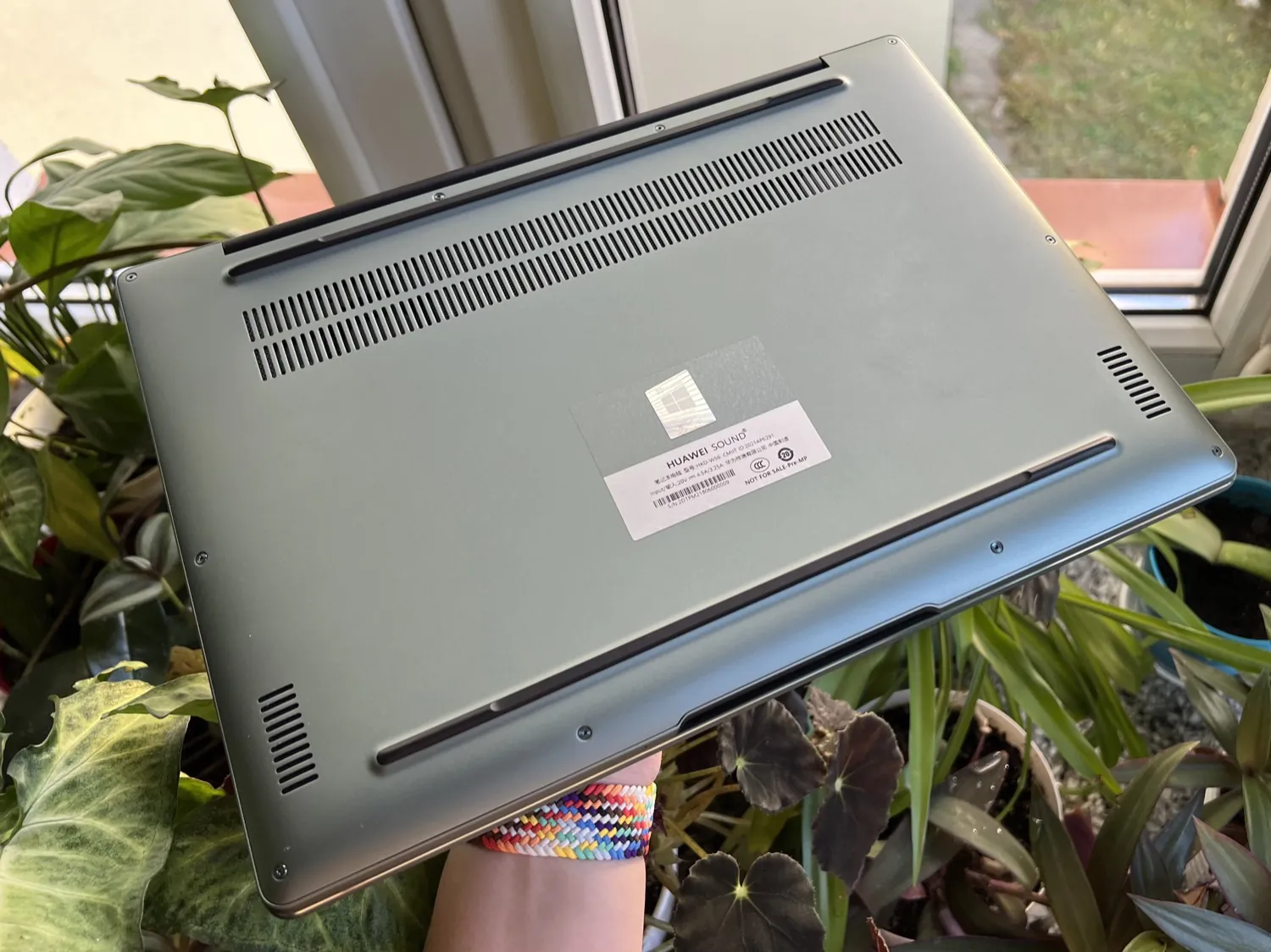
The lid opens easily thanks to the wide recess in the bottom panel.
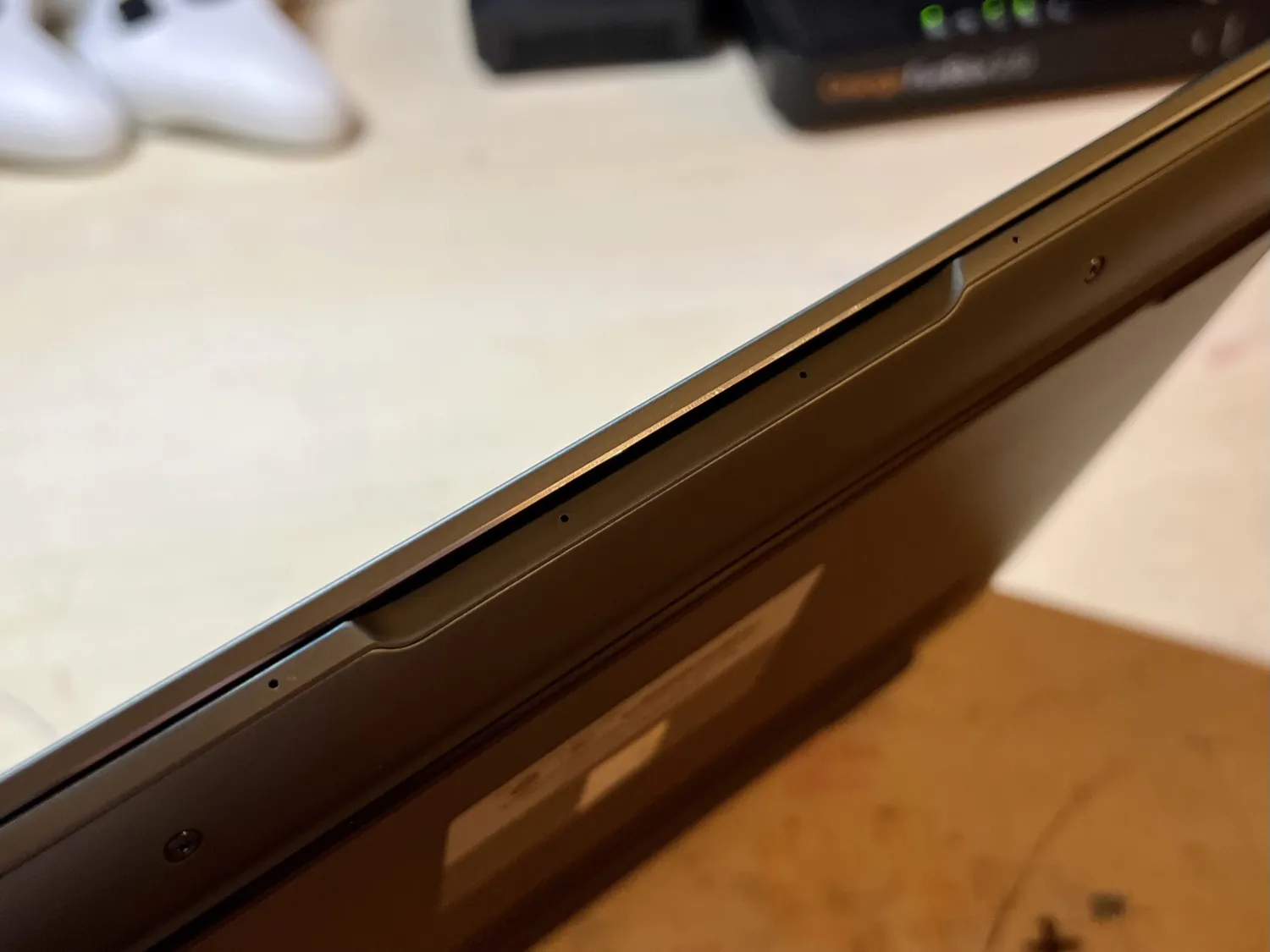
It has rounded edges, which perfectly matches the design of the new Windows 11 (you can easily upgrade). The screen can be opened by about 150 degrees. It’s is a fully glass-protected 3:2 display with minimal bezels.
The upper bezel is only 8 mm high, but it contains a camera for video calls and infrared sensors for face recognition (Windows Hello function). The side bezels are less than 5 mm. The bottom is 12 mm, although compared to other laptops it still looks narrow. The screen occupies 90% of the area of the MateBook 14s top panel.

The build quality, as befits a MateBook, is perfect.
In general, the MateBook 14s is quite compact. Its width is 31.4 cm, length is 23 cm, and thickness is 17 mm (or 21 mm, if you count the legs). The lower part of the case narrows from the top to the bottom, and this also makes the case feel thinner. The weight of the MateBook 14s is 1.44 kg. A lot compared to competitors, but, in my opinion, not so critical.
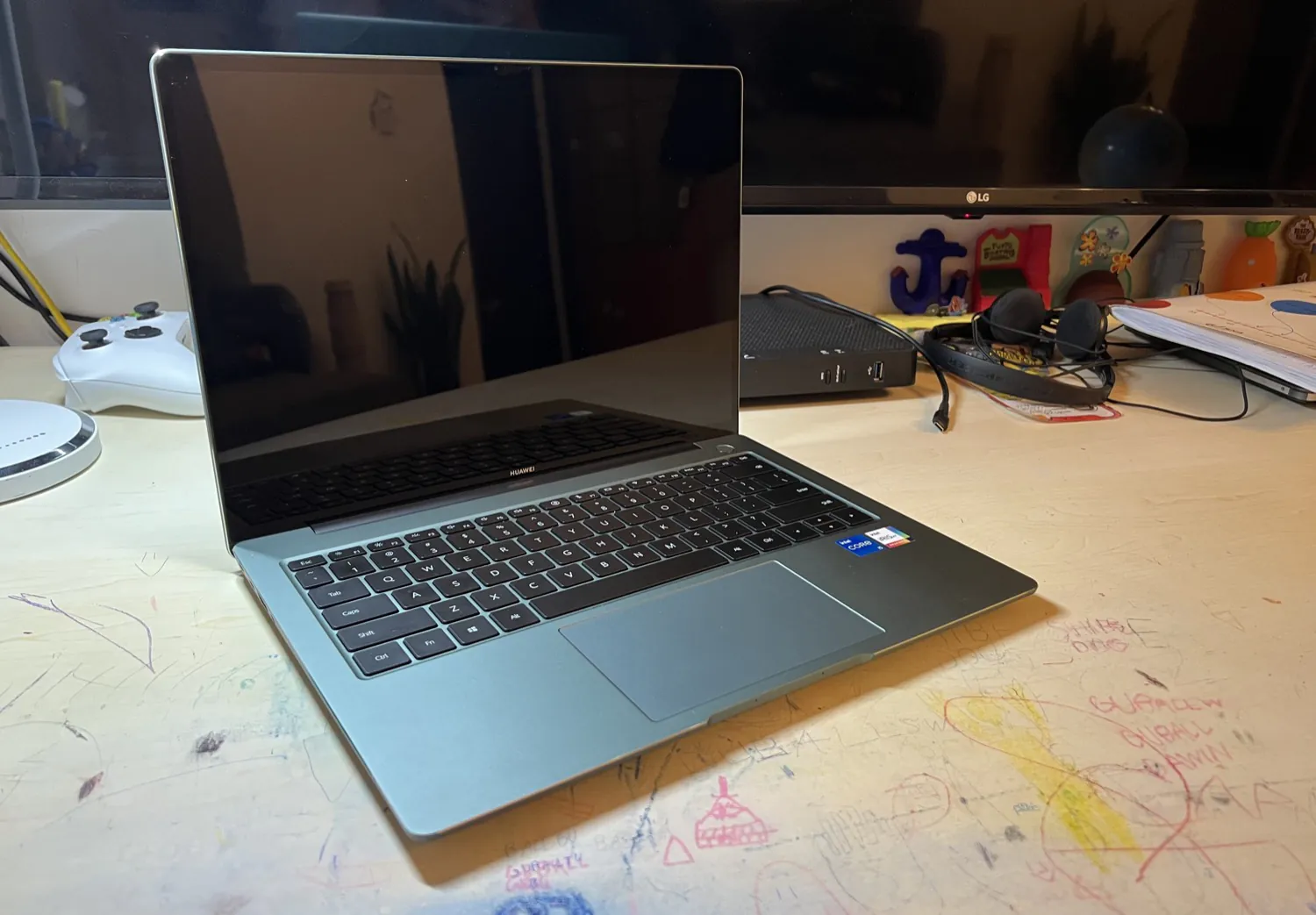
Read also: Huawei Watch GT 3 review: Smartwatch with HarmonyOS on board
Keyboard and touchpad
The keyboard takes almost the entire width of the topcase. The location of the keys is convenient, intuitive, without surprises. If you had other MateBooks, then you won’t have to get used to it. The keys are made of pleasant and durable polycarbonate, and are quite large. The travel of the keys is pleasant, light, springy, and deep enough (1.5 mm). When you press the keys, you will feel the cushioning thanks to the rubber lining.
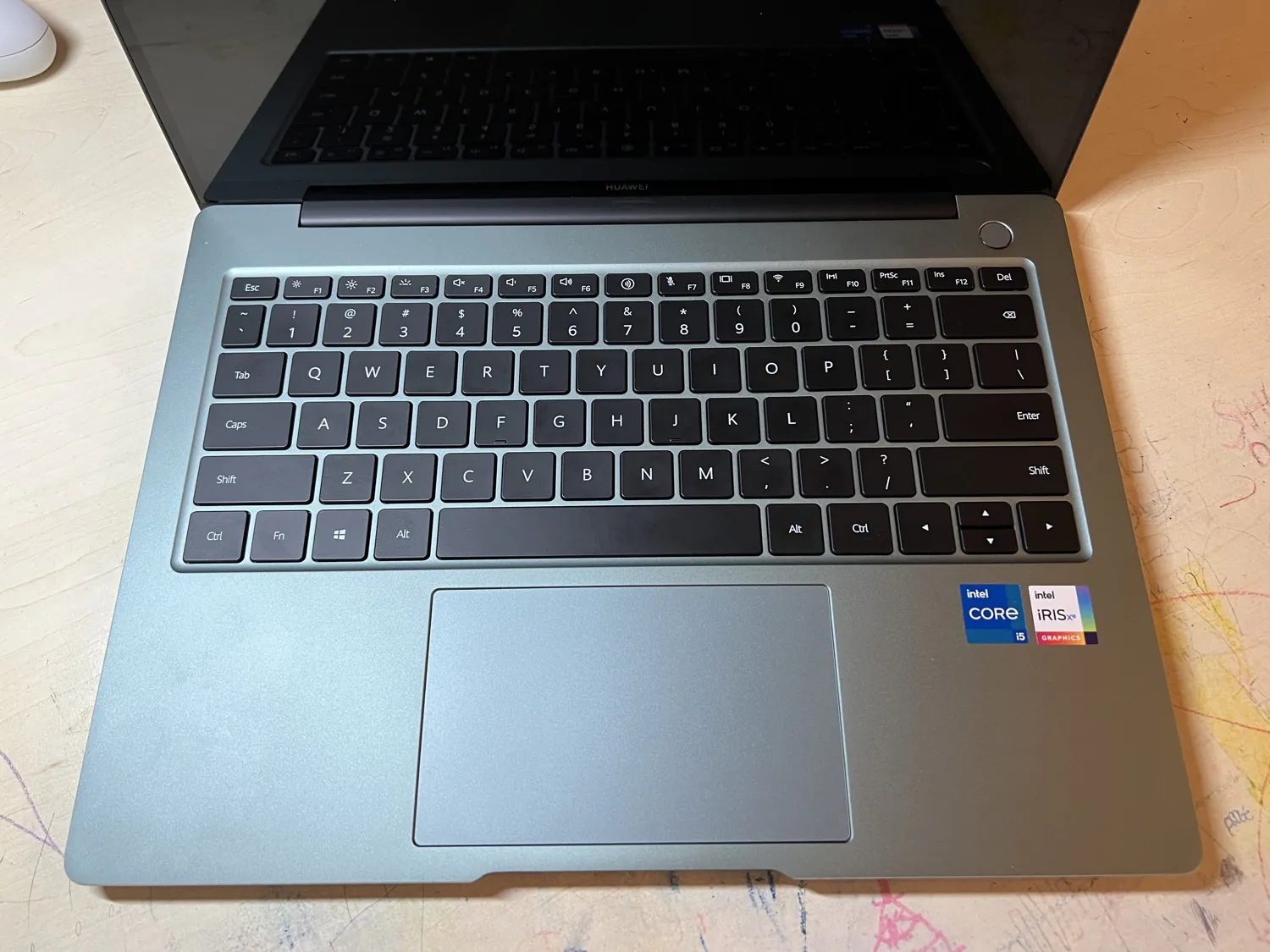
Sp yes, the keyboard is quite good. You can only find fault with the up-and-down keys, which are half the size of the left-and-right keys — you will probably have to get used to this.
The keys have a white backlight, two levels are available – brighter and paler. However, it’s never really bright, and the illumination is uneven. But in any case, it is better to have at least one than none. It helps when working in the dark.
I will add that the laptop power button is located on the right above the keyboard. It has a fingerprint scanner, so you can log in with one touch, it’s convenient.
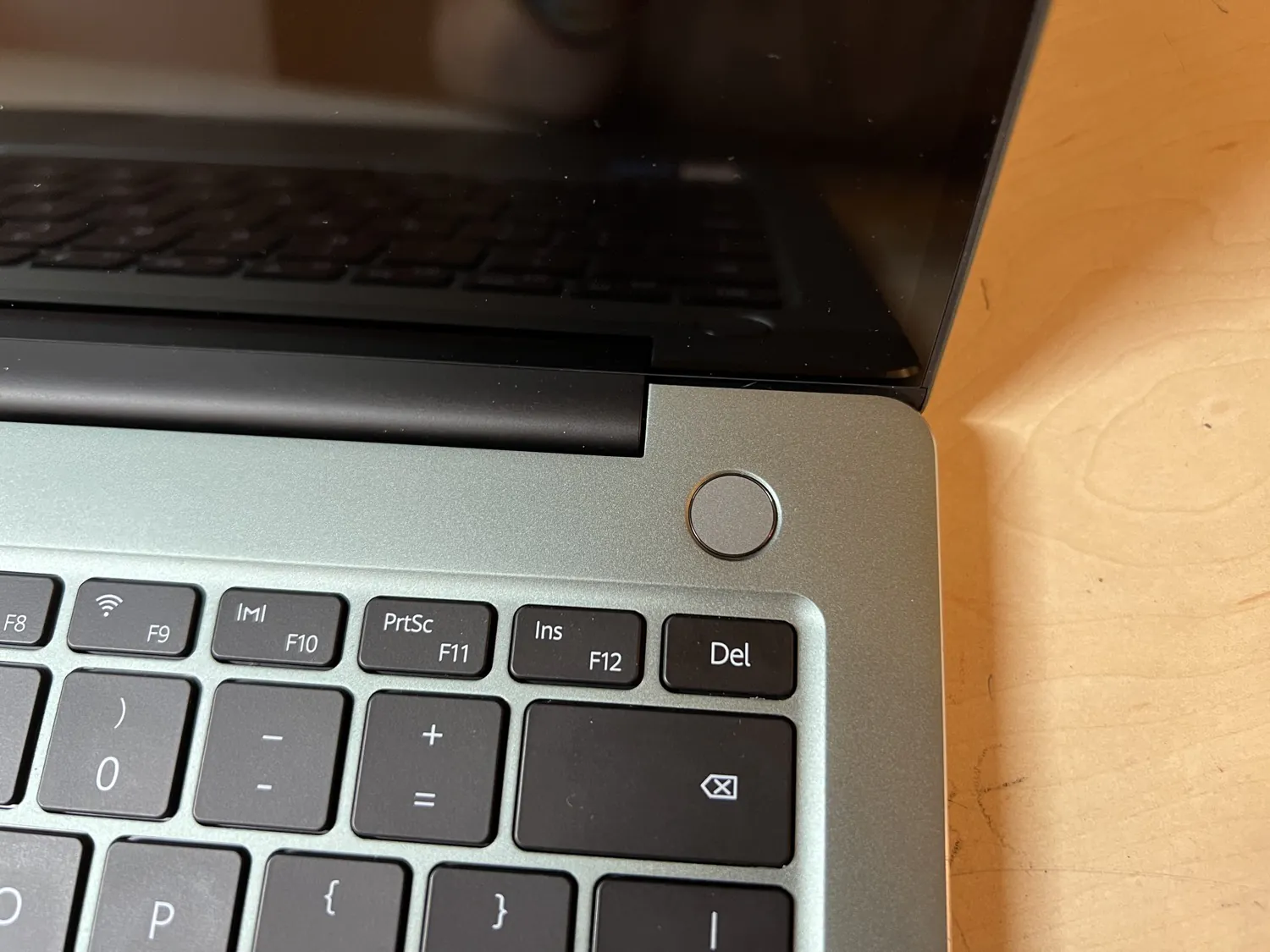
The touchpad is large, smooth, pleasant to the touch. Sensitivity is high, touches and gestures are recognized without the slightest problems. The touchpad keys are not highlighted separately, the entire lower part can be pressed. The stroke is very deep, with a loud click, which I didn’t like.
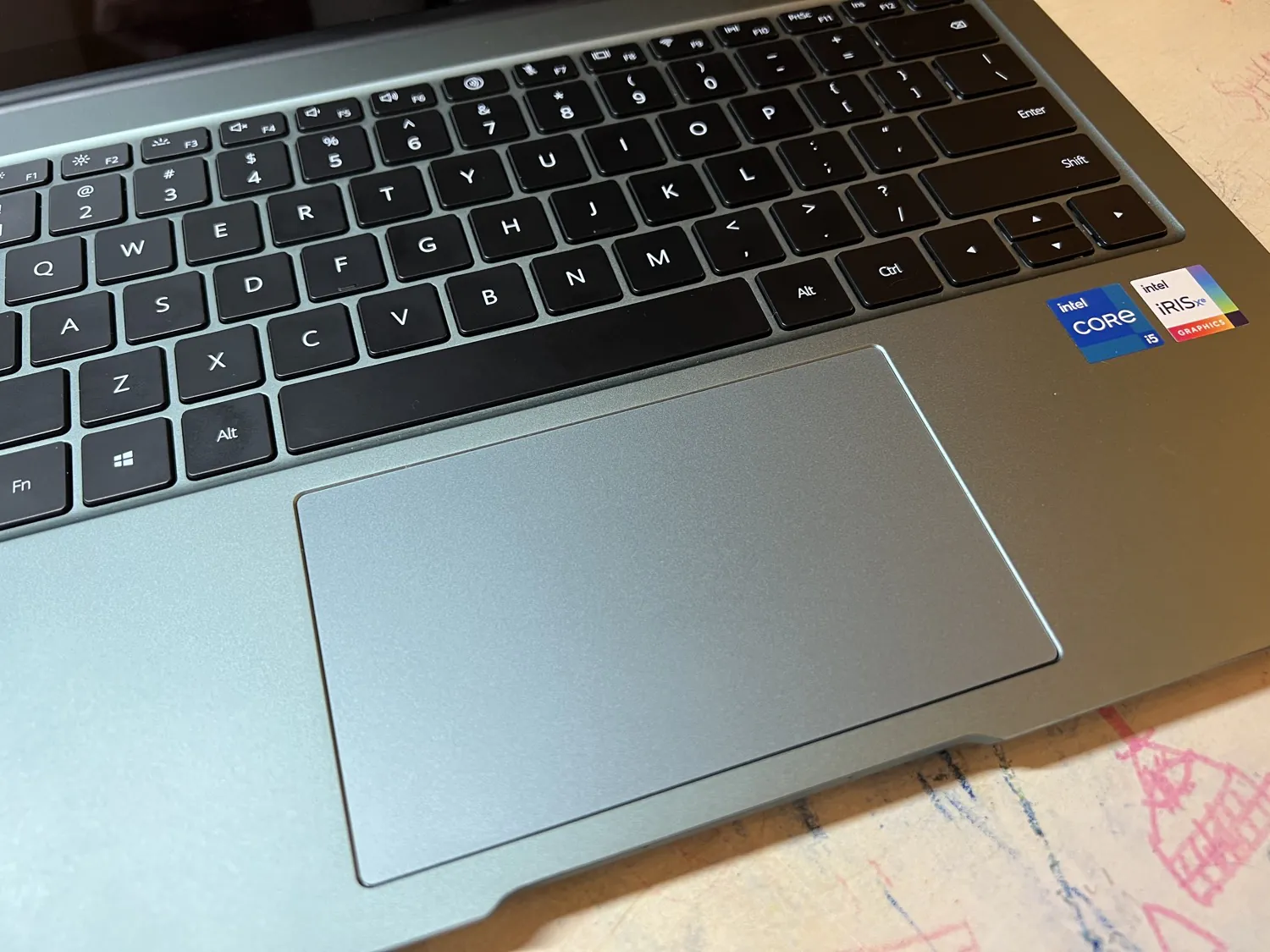
It is worth adding that an NFC receiver is built into the touchpad. Of course, not for contactless payment, although that would be something. It is useful for those who have Huawei or Honor smartphones. Then, within the ecosystem, devices will be able to quickly connect to each other and exchange files.
Ports
The choice of ports, in my opinion, is sufficient. On the left side of the MateBook 14s there are two USB 3.2 Gen 2 type-C ports with support for DisplayPort, Power Delivery and Thunderbolt 4 (the latter is only in the senior model with a Core i7 processor). Each of these ports can be used to charge a laptop. There is also a full-size HDMI 1.4 on the left, as well as an audio output for headphones/microphone.
On the right side there is a standard USB 3.2 Gen 1 type-A connector. In my opinion, for most users, this set of connectors is more than sufficient, no adapters will be needed. Although it definitely wouldn’t hurt to have another full-fledged USB on the right, and for some users, a card reader. There was clearly space for all this.
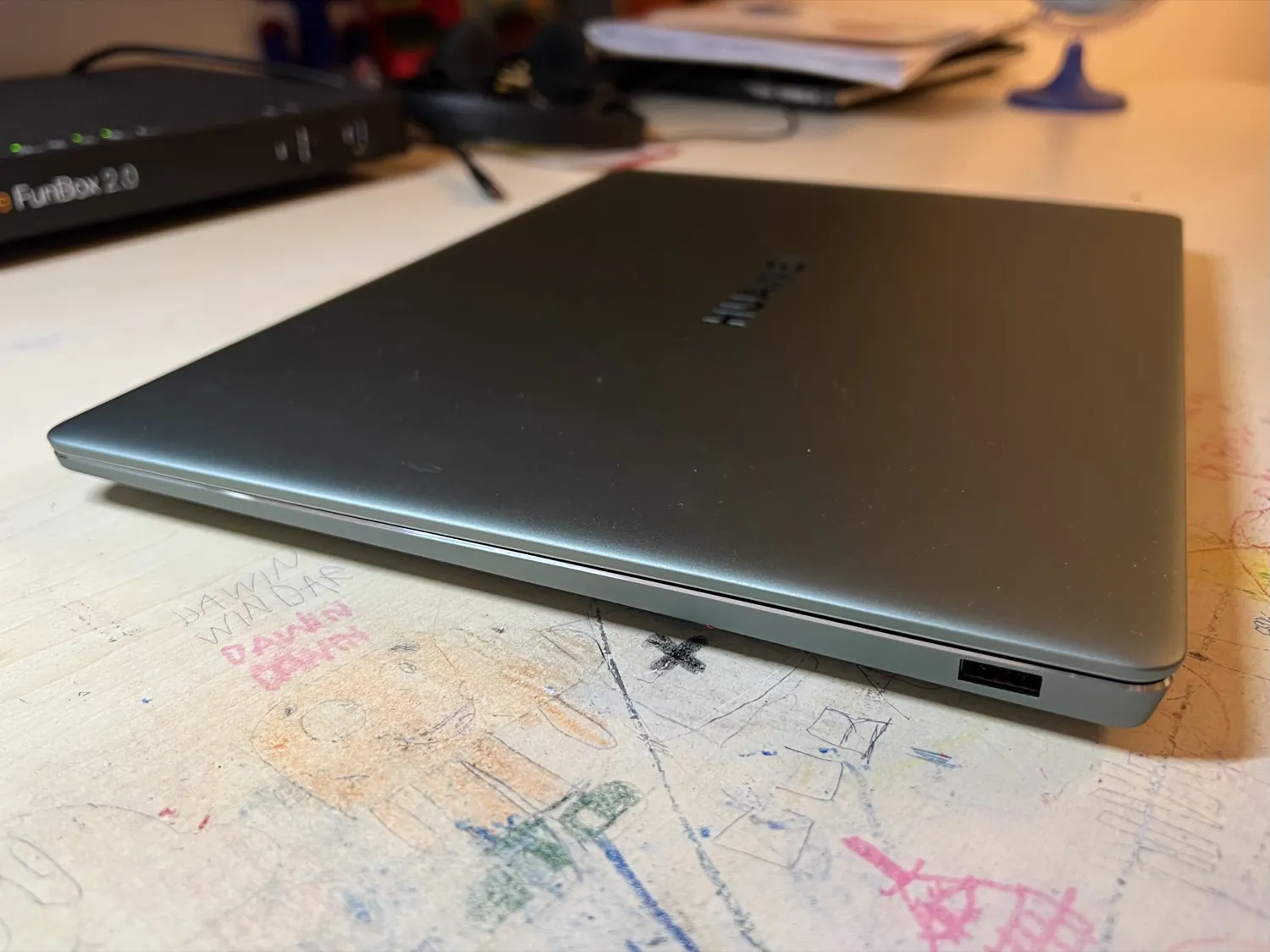
Read also: How to use Google services on Huawei smartphones and tablets in 2021
Screen
One of the main advantages of the MateBook 14s is its display. The laptop received a touch screen with an LTPS matrix (a kind of IPS) with a diagonal of 14.2 inches, proportions of 3:2 and a resolution of 2520×1680. The screen is covered with glossy glass, so there is no escape from glare on a sunny day. But the high brightness level somewhat eliminates this problem.
A feature of the MateBook 14s display is support for 90 Hz. As you and I know from experience with smartphones, this makes the image visually smoother. Adaptive Sync technology is supported in order to save battery, and the refresh rate may decrease depending on the application used. If desired, you can switch to 60 Hz in the settings (or with Fn + R), but there is no point.
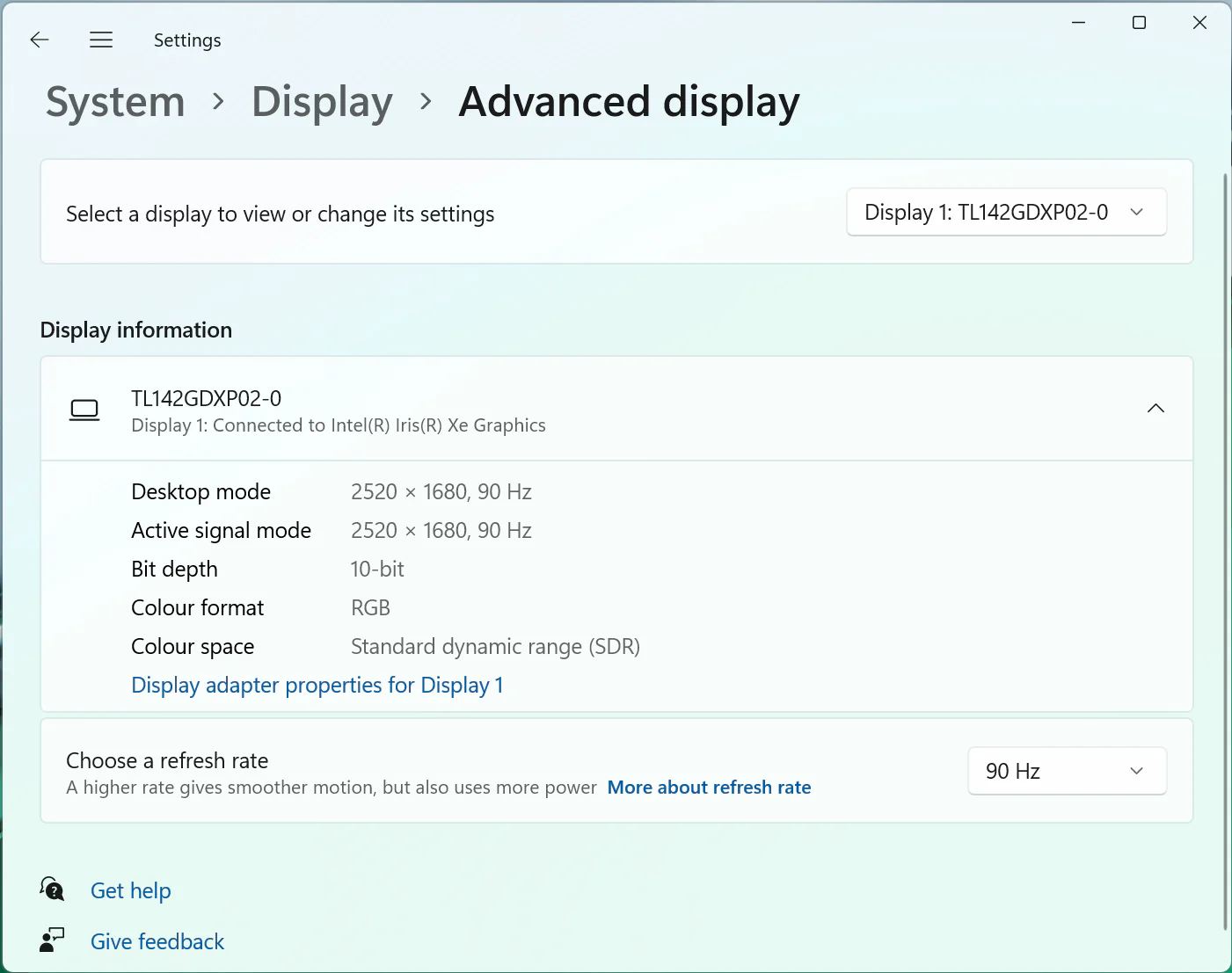
The aspect ratio of 3:2, in my opinion, is ideal. The screen is not too narrow, it fits a lot of information. It is very convenient for reading, working with documents, and surfing the web. For this, I once praised the Huawei MateView monitor. It’s nice to see the proportions of 3:2 in a laptop as well. Previously, such screens were used only by Microsoft in the Surface line.
The matrix itself is very high-quality, bright, juicy, with high viewing angles. The MateBook 14s screen has excellent brightness — 470 cd/m2, high contrast (about 1774:1), as well as an almost perfect white color temperature of 6470K. The sRGB gamma is also perfectly covered — 96.4% (for AdobeRGB it is 67.8%, and for DCI-P3 — 69.9%). The colors are displayed accurately, the average DeltaE error for the sRGB gamut is 3.23, and the maximum is 5.72. We can safely say that the MateBook 14s screen is suitable not only for ordinary work with documents and web surfing, but also for amateur work with photos and videos. The only thing missing is HDR support, but that’s not critical.
Подсветка достаточно равномерная (отклонения не превышают 8%).
В ходе работы с MateBook 14s я не использовала сенсорный дисплей. Не очень понимаю, зачем это нужно, если ноутбук стандартный, не трансформер. Да и пальцами можно легко заляпать глянцевую поверхность экрана.
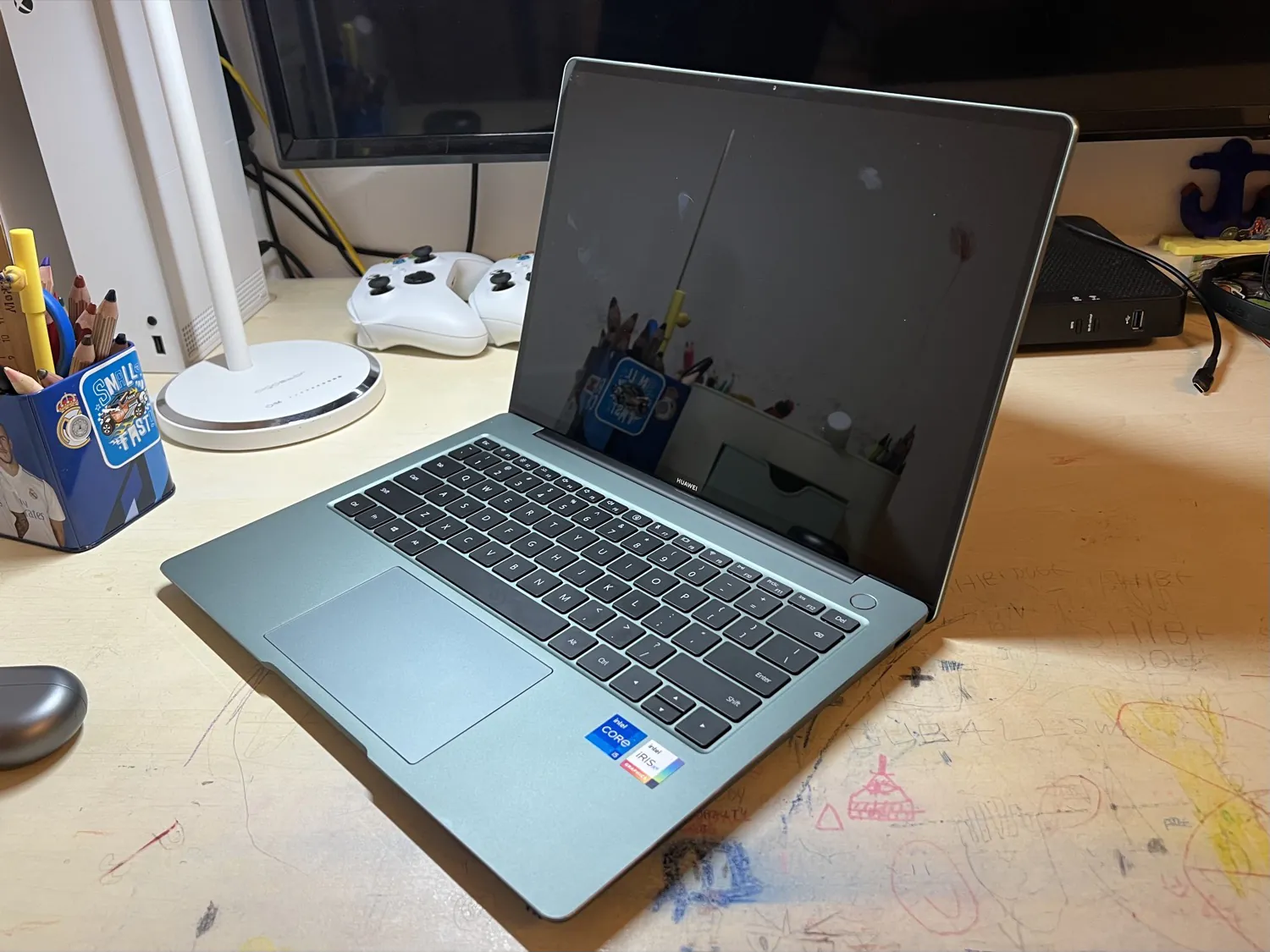
Read also: Huawei MateStation S review: Compact PC for home and office
What’s inside
Processor
The MateBook 14s uses either an Intel Core i5-11300H or Intel Core i7-11370H processor. We got the first option for the test. Both processors belong to the Tiger Lake family, are based on a 10 nm process technology and contain 4 cores with the possibility of multithreading.
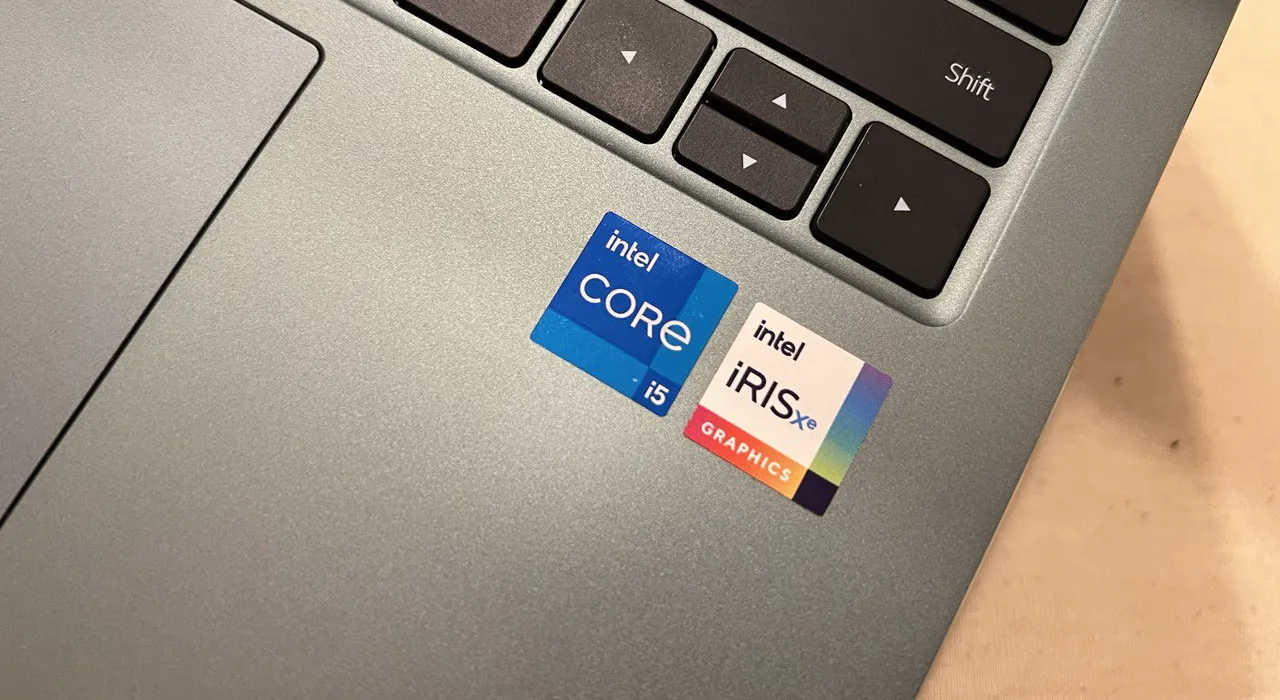
The base frequency is 3.1 GHz (i5) or 3.3 GHz (i7). In Turbo mode, the frequencies grow respectively to 4.4 GHz / 4.8 GHz when using 1 or 2 cores and to 4.4 GHz / 4.8 GHz when loaded using all four. The processors support DDR4-3200 and LPDDR4X-4267 standard memory, have 4 free PCIe Gen. 4 lines, support USB 4.0 standard. There is also Thunderbolt 4 support, but only in the senior MateBook 14s model with a Core i7 processor.
The letter H at the end of the processor name means that it belongs to the Tiger Lake-H35 (TGP 35W) line, designed for powerful computers. However, this is, so to speak, the “budget” H series, which is not far from the U series (processors with this marking are used in thin and light ultrabooks).

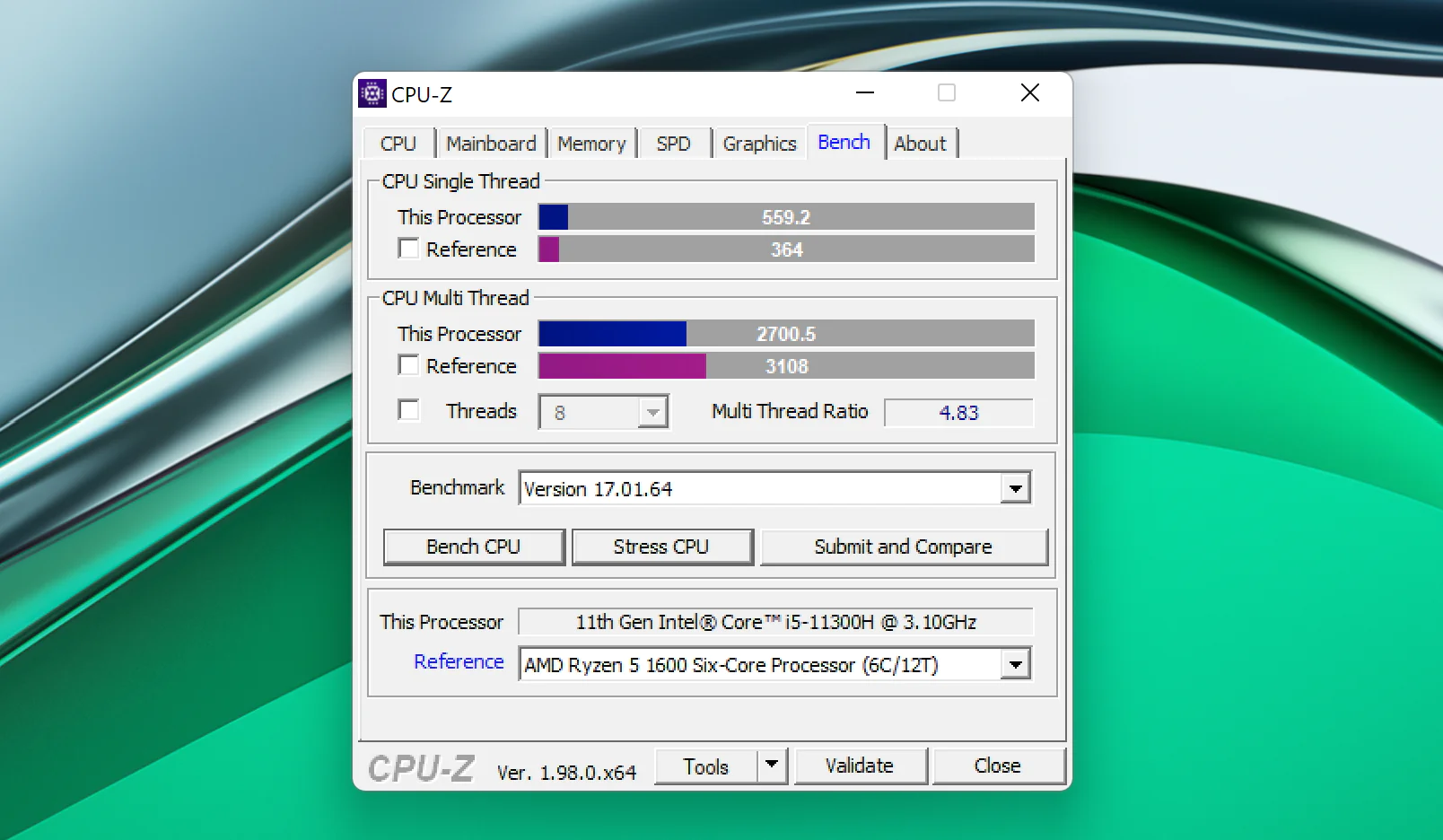
Graphics
The senior MateBook 14s model with a Core i7-11370H processor uses the Iris Xe Graphics video chip (96 EU). Our model has a weaker Iris Xe Graphics (80 EU). The maximum frequency is 1300 MHz. These video chips do not have their own memory, but they can use laptop RAM, up to 8 GB if necessary. The clock frequency of the “shared” memory is 1400 MHz.
RAM
Both older versions of the MateBook 14s are equipped with 16 GB of RAM. The cheaper one has 8 GB. This is not the fastest memory option (LPDDR4X-3733), the processor supports faster options. This affects performance, including in games. The memory is soldered on the board and can’t be replaced.
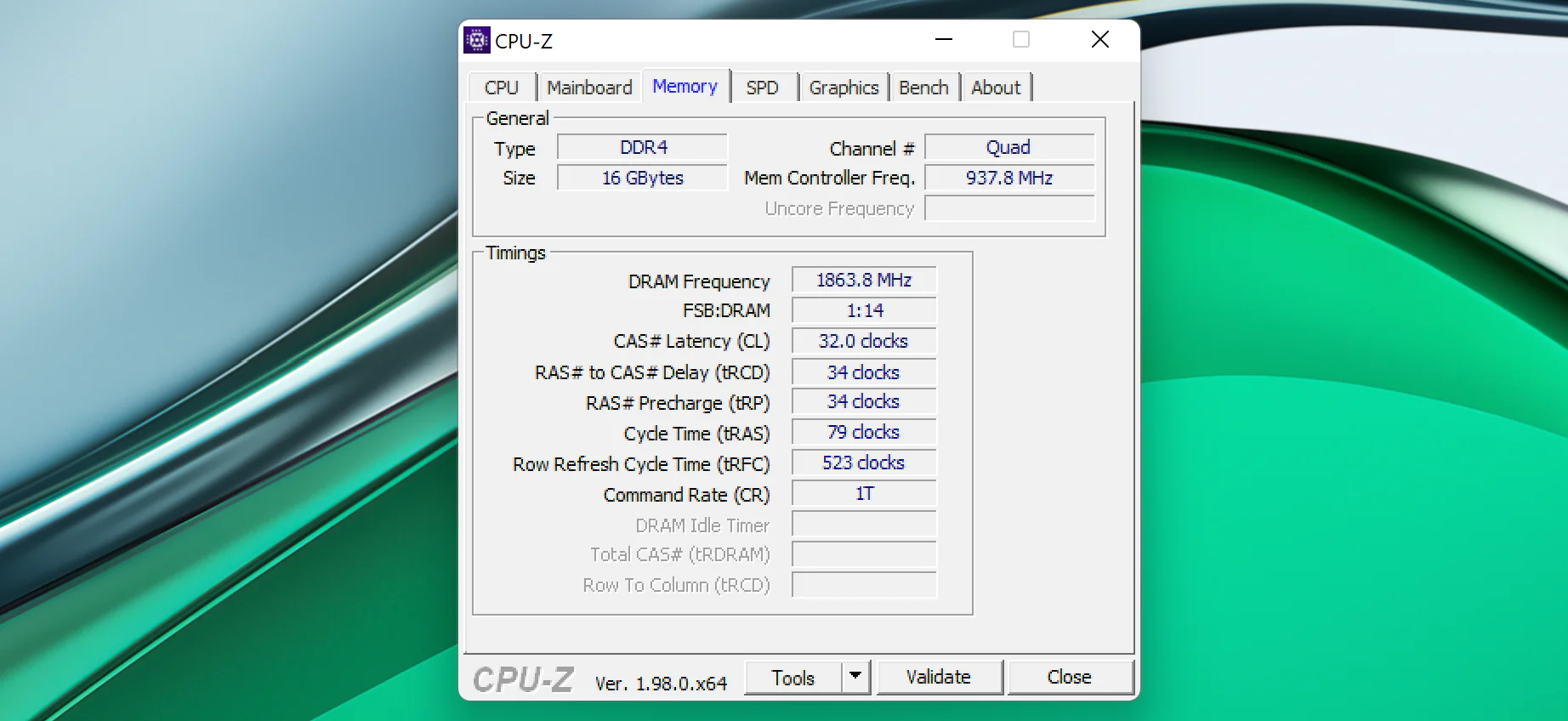
Storage
MateBook 14s with Core i7 is equipped with a 1 TB SSD YMTC PC005 disk. Our test model with Core i5 received half as much — 512 GB. Both drives are manufactured by a young and little-known Chinese company YMTC. The YMTC PC005 uses the M connector.2 2280 formats, PCIe Gen 3.0×4 interfaces (although the processor also works with PCI-e 4.0) and NVMe 1.3. Disks use 3D TLC technology with 64 layers, controlled by a Phison controller.
According to official information, the YMTC PC005, regardless of the disk size, has a read speed of about 3500 MB/s. But the write speed is different — 2900 MB/s for 1 TB of disk and 2500 for 512 GB. Our tests confirm this data, the MateBook 14s model with Core i5 works fast.
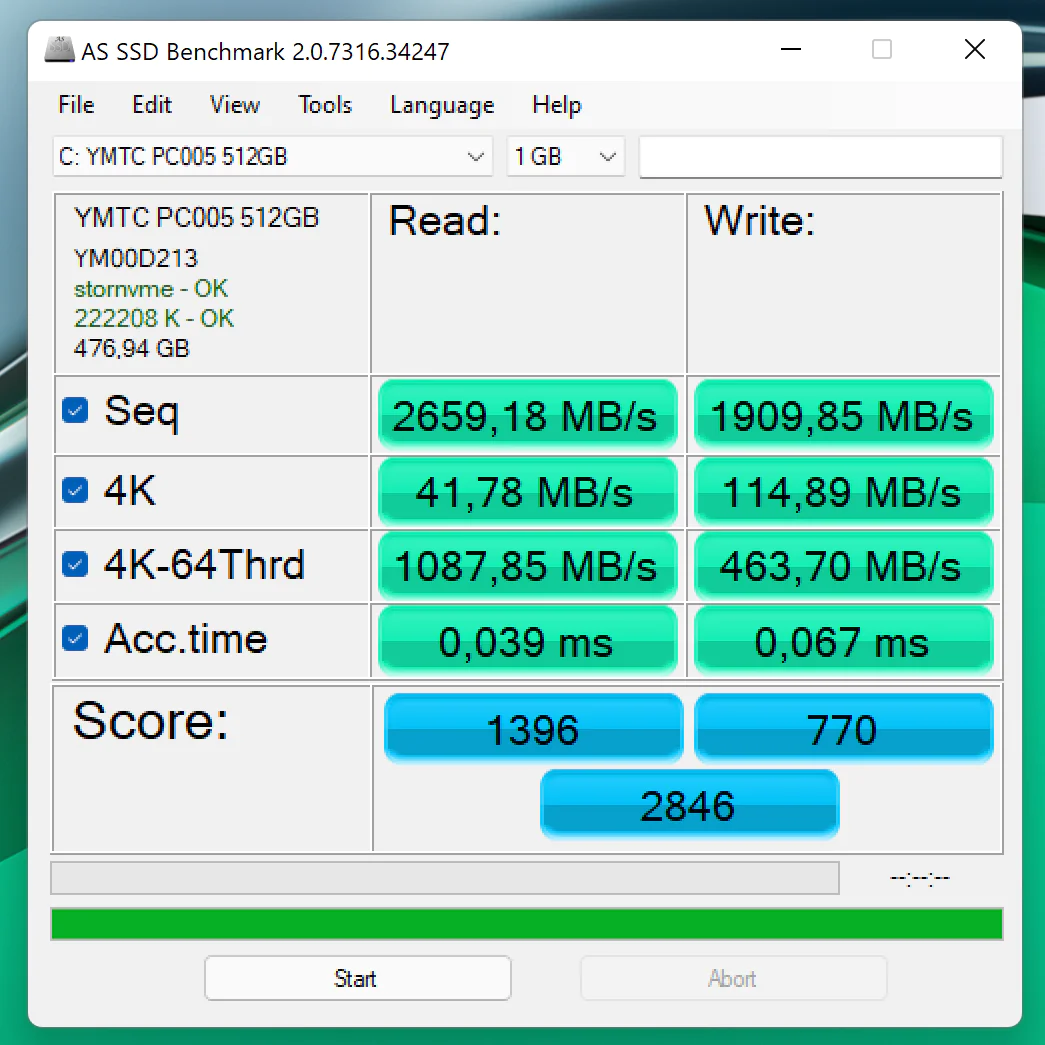
However, it should be noted that YMTC brand data carriers have a significantly lower maximum number of random read and write operations per second (IOPS). This may affect the performance of some applications.
Wireless networks
The Intel AX201 chip is used with support for the new Wi-Fi 6 standard (MIMO 2×2 up to 2400 Mbit/s) and Bluetooth 5.1.
Speed and game performance
The MateBook 14s itself is a productive solution. The laptop copes with everyday tasks perfectly. As for games, it’s better not to count on modern games with maximum graphics, but the device is generally suitable for working with photos/videos.
It is logical that no one will buy this particular model specifically for games, but it is still possible to play on it. Yes, the resolution of the games will be lower (which is a pity, because the Huawei MateBook 14s screen is really good), and the graphics won’t be amazing, but in general, almost every new game will run fine. And you can always go back to classic and older titles like Civilization or the Witcher 3. The latter runs fine with average graphics settings, 33 fps. Fortnite at low settings shows about 63 fps, GTA V with average graphics has 60 fps.
Read also: Huawei WiFi AX3 review: Affordable router with Wi-Fi 6 Plus
Cooling
The laptop definitely isn’t noisy. If you are engaged in basic tasks like working with documents or viewing simple web pages, fans (there are two of them, by the way) will not be used, and the laptop will make do with passive cooling of the processor. If you open heavy sites, install applications, process photos in high resolution, then the fans will work at a low speed, producing almost imperceptible noise at the level of 24.5 dB.
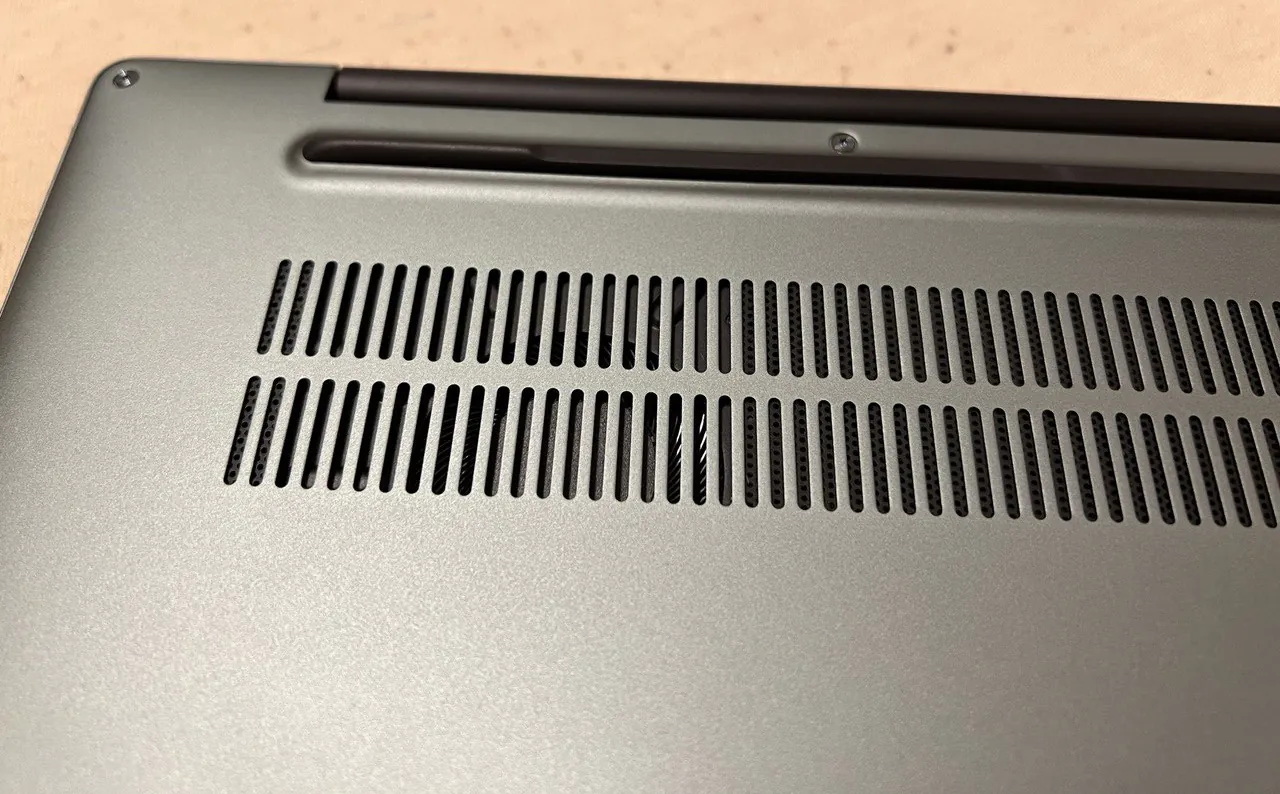
However, even if you use a laptop in the highest power mode and, for example, play games, the noise will not go higher than 28.5 dB.
When under extreme load, the notebook will produce 42.4 dB of noice. However, in general, the MateBook 14s one of the quietest laptops on Windows (of course, there is no point in comparing it with the MacBook M1, they don’t make noise at all).
Again, during normal office work, the laptop does not heat up, the metal case remains cool. If you load the processor for a certain time, the MateBook 14s can get hot, but moderately. For example, it won’t ger hotter than 40 degrees in the keyboard area, and no more than 41 degrees in the warmest place near the screen. You can work comfortably, since the case does not heat up above 30 degrees in the touchpad area.
Under load, the lower part of the case in the processor area gets especially hot. I measured 44-46 degrees there. This means that it is uncomfortable to hold a laptop on your lap, it is better to work with it on the table.
Battery and operating time
The MateBook 14s received a 60 watt battery. If we compare it with the other similar devices, it’s a lot. But, of course, the battery life depends on both the screen and the processor. Our MateBook 14s based on the i5 processor performed very well. When the screen brightness is above average in power saving mode (without charging), the device allows about 12-13 hours to work with documents or surf the Internet. Slightly lower the brightness and you can get 16 hours. You can watch a movie in Full HD at medium volume using Wi-Fi for about 10 hours.
If you play resource-demanding games, the battery will last for about 2-3 hours.
A 90-watt charger is supplied with the laptop. In size, it is not much larger than modern super fast charging for smartphones.
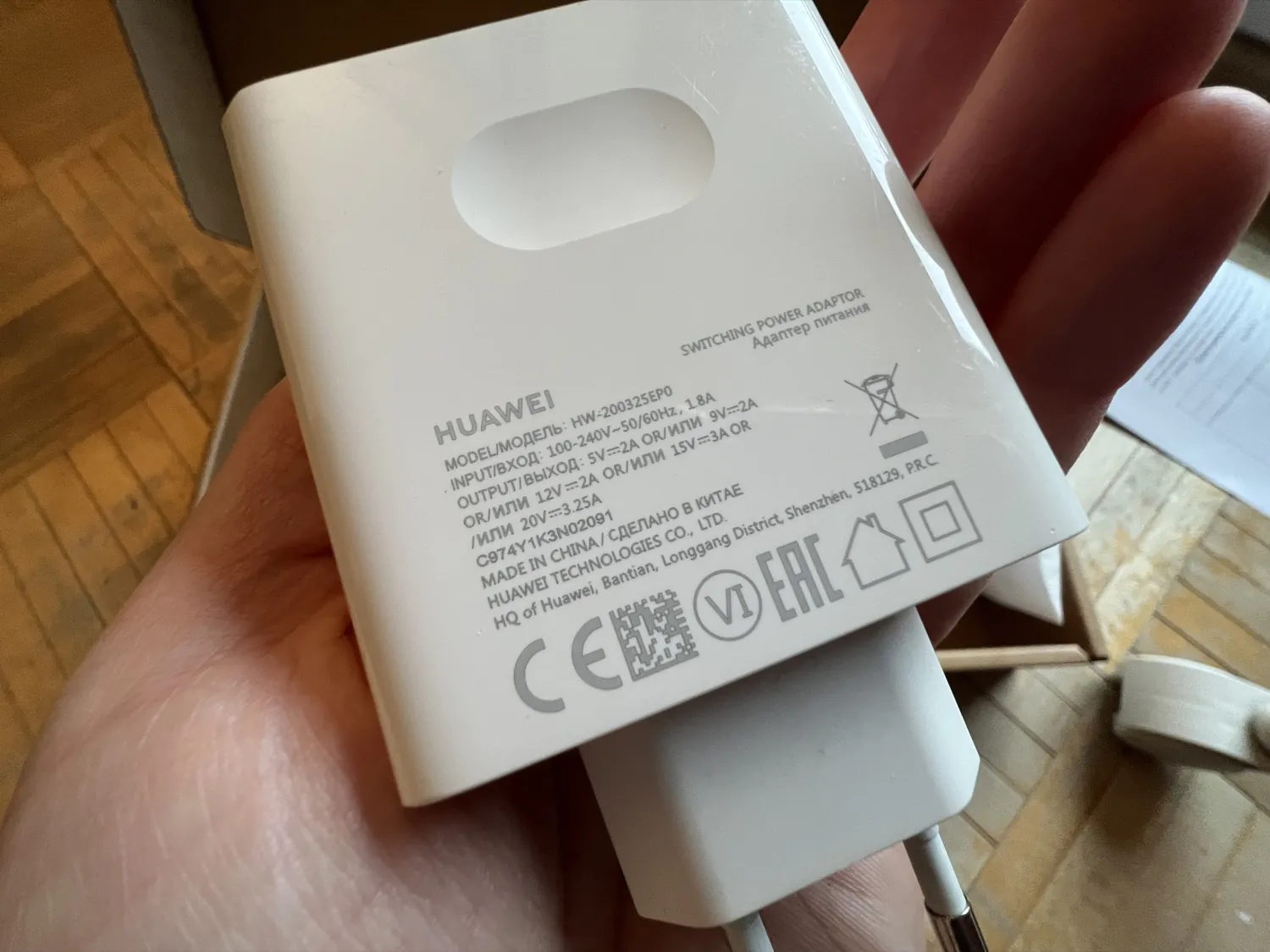
The charging speed is high — half an hour is enough for 50% charge, a day of simple office work is enough. The model can be fully charged in about an hour and a half.
Sound and camera of the MateBook 14s
The advanced Huawei Sound system includes 4 microphones that record surround sound (their holes are just visible on the front of the bottom panel of the laptop), and 4 speakers. The sound is really wide and high-quality, even the bass is noticeable. The volume is also good. Microphones record sound even at a distance of up to 5 meters from the laptop, with noise reduction, too.


I won’t say that the MateBook 14s is the best laptop in terms of sound on the market, but those that sound better cost twice as much or are equipped with built-in soundbars.

But with the camera, everything is not as rosy. 0.9 MP 720p matrix in 2021 is not serious. In addition, the image processing is too aggressive, the picture comes out blurry. Not critical for most, but worth bearing in mind.
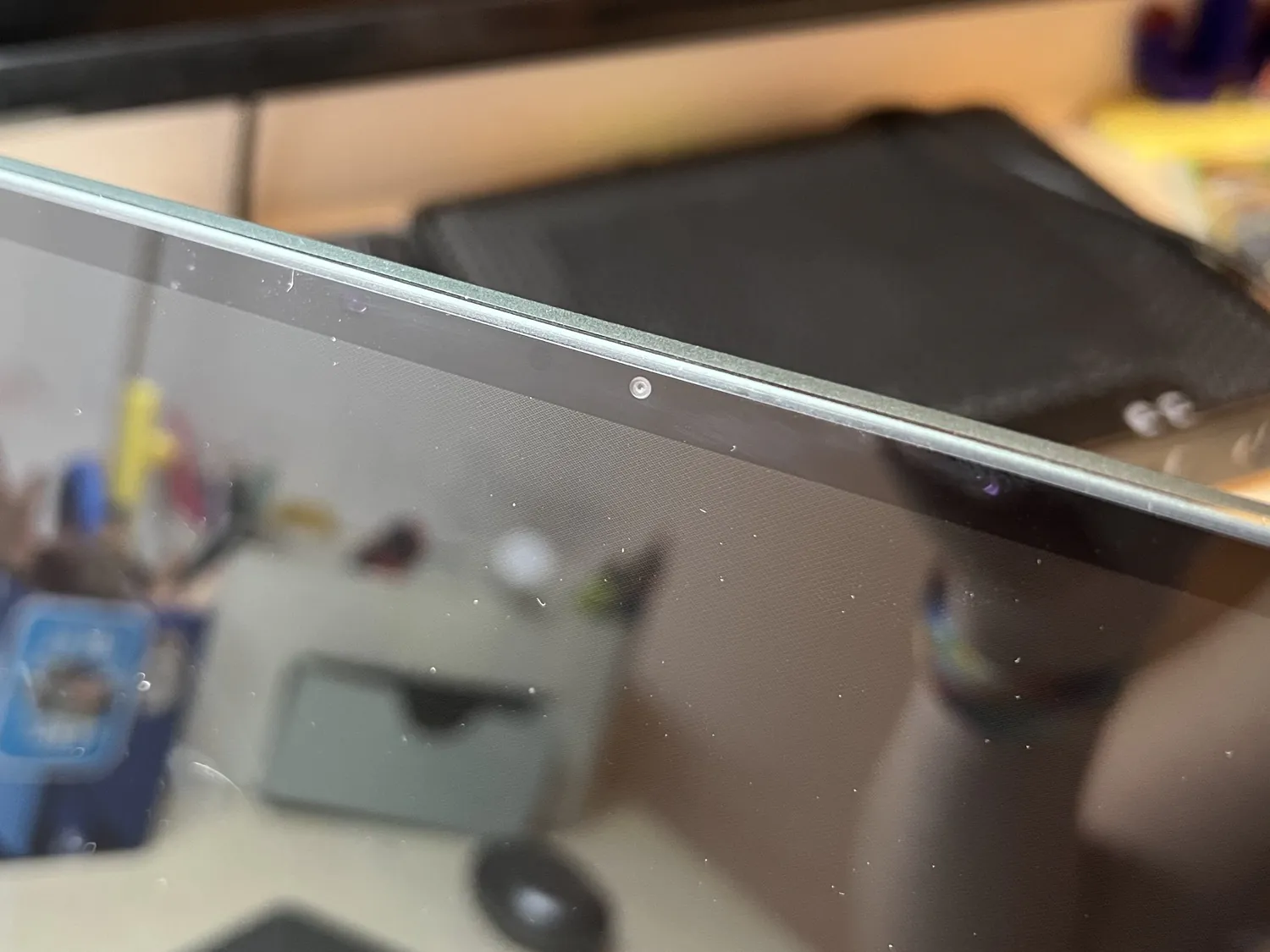
But the camera is finally located where it belongs – above the display. Previously, Huawei placed webcams in one of the raised keys of the F-row of the keyboard, and the angle of view was not the best. And next to the camera there are IR sensors for face recognition (Windows Hello function). It doesn’t work as fast as we would like, but it works. Personally, it was more convenient for me to log in to the system using a fingerprint, since it’s faster.
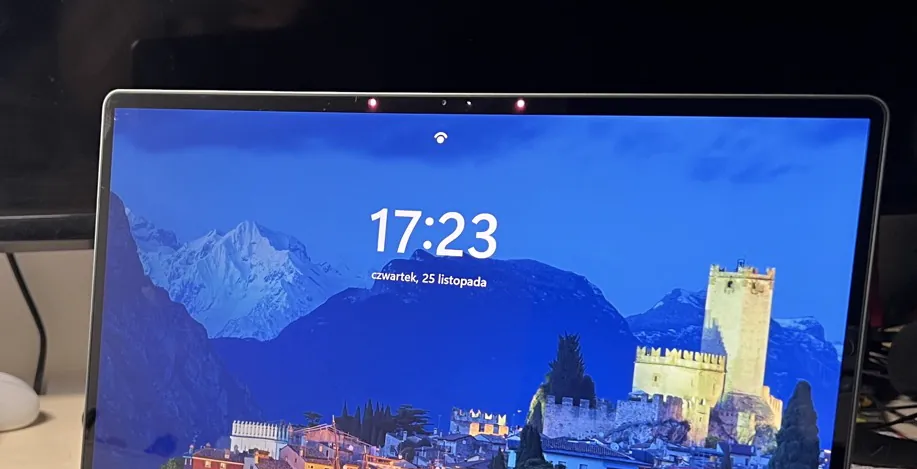
Read also: Huawei MateView monitor review: Good looks, and what else?
Huawei software and proprietary app
As already noted, out of the box, the MateBook 14s runs on Windows 10, but the system initially offers to upgrade to Windows 11 for free, which I actually did.
Before proceeding to the conclusions, we will also tell you about the app that Huawei added to the operating system. It’s called the PC Manager. It allows you to manage performance modes, optimize and connect other Huawei devices, even contact the service. Hardly essential stuff, unless you suddenly have a Huawei smartphone lying around – then you can use it remotely on a laptop screen and drag and drop files.

Also, in the lower right corner of the system, you can notice an icon similar to the letter M.
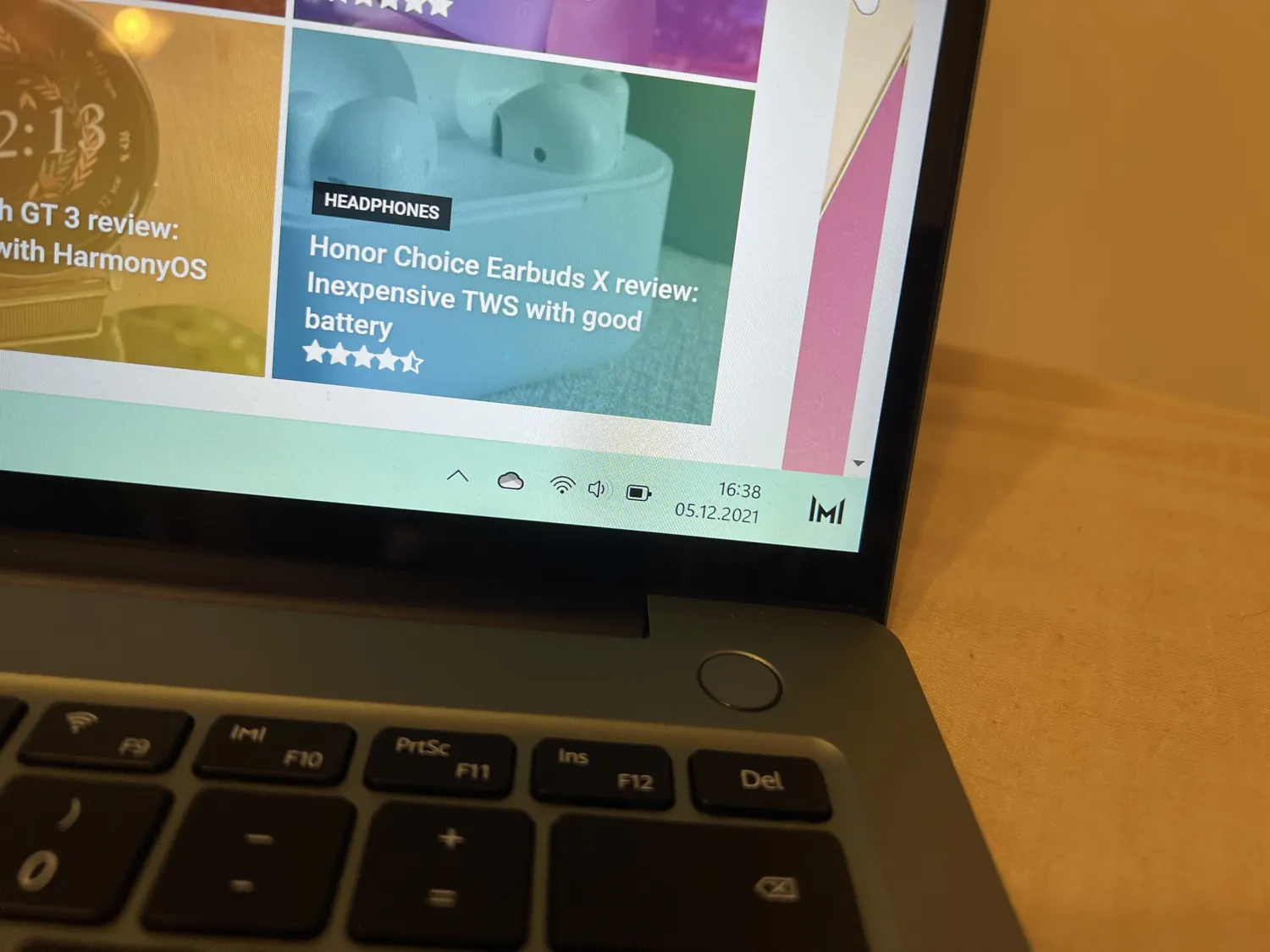
By clicking on it, you will open the Huawei control panel. There you’ll find information about the load on the processor, a list of recent open documents, a visual clipboard, quick functions (screenshot, video recording, search, notes, etc.). Quite nice.
Verdict
The MateBook 14s is a very good laptop. Perhaps its main advantage is the 14.2 LTPS screen with a convenient 3:2 aspect ratio, excellent picture quality, a resolution of 2520×1680 and 90 Hz. It is also difficult to complain about performance, and both Core i5-11300H and Core i7-11370H are suitable for moderate gaming and working with graphics. At the same time, the laptop is very quiet, rarely uses fans, and mostly stays cool.
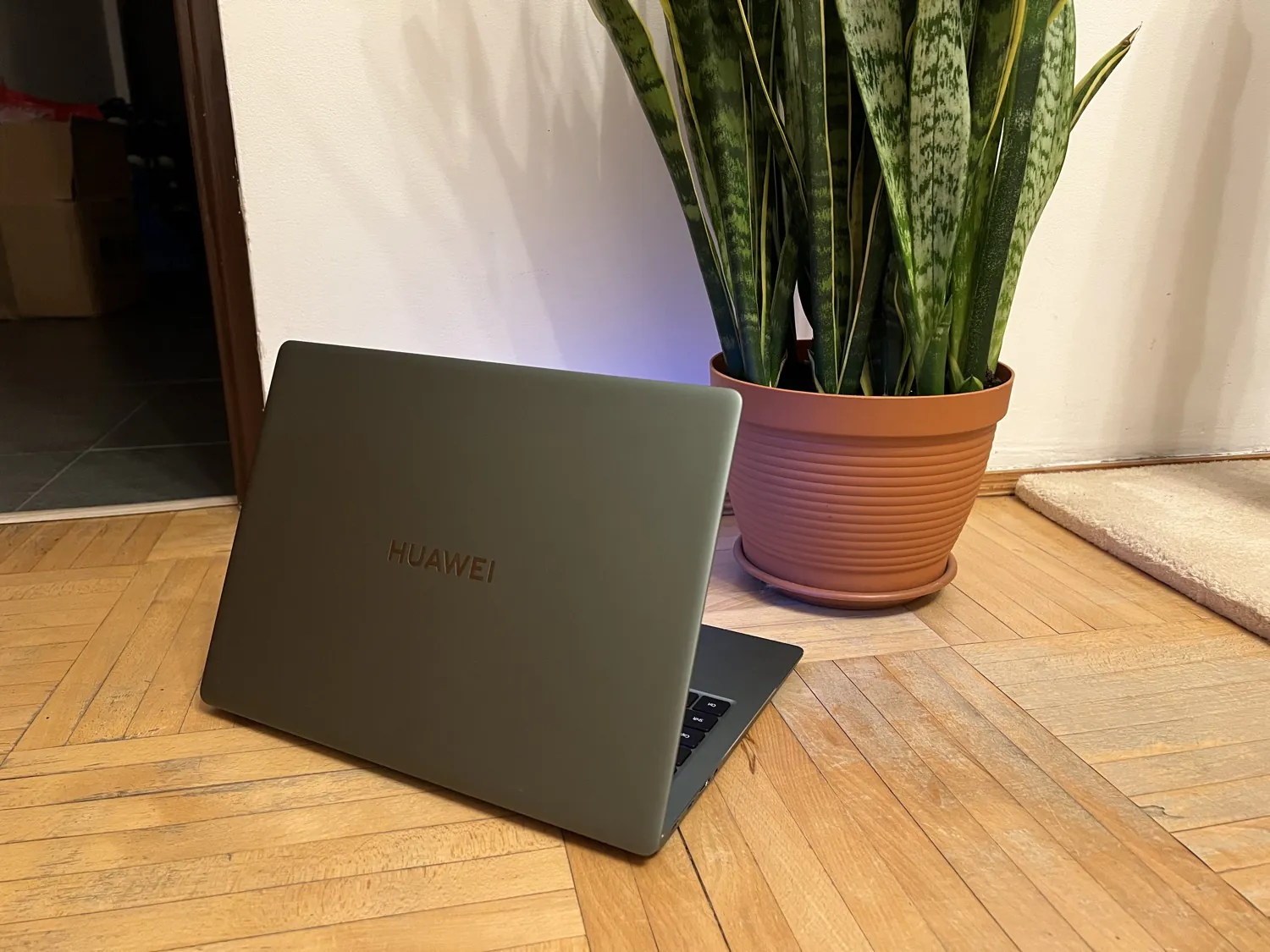
The keyboard is comfortable, with large keys, and the touchpad is responsive. The set of ports is sufficient for most users. There is a fingerprint scanner in the power button and IR sensors for Windows Hello. The battery life is also very decent. And, of course, you get compact dimensions, excellent design, great build quality and premium materials.
Are there any shortcomings? Perhaps, but not for everyone they will be critical. The RAM could be faster, the keyboard backlight is uneven. You can also find fault with the fact that you can only upgrade the SSD, and nothing else. Also HDMI is the old 1.4 version. Perhaps the main disadvantage is the price.
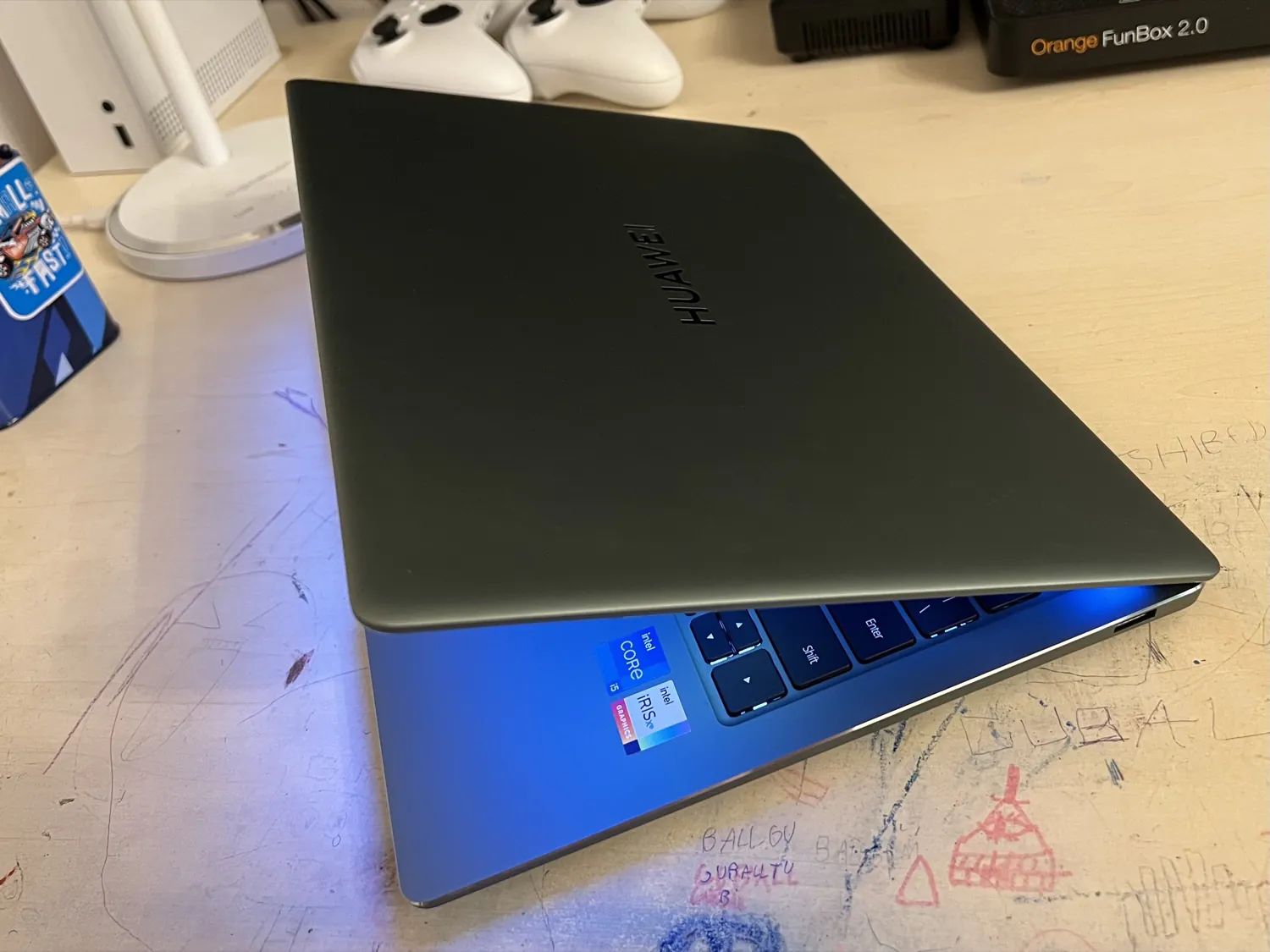
The Huawei MateBook 14s with a Core i5-11300H processor, 8 GB of RAM and a 512 GB SSD costs about $1,200. The same option, but with 16 GB of RAM (our one) costs almost $250 more! A top-end model with Core i7-11370H, 16 GB of RAM and 1 TB of storage will cost you almost $ 1,850! In short, the new MateBook 14s is not affordable at all. I’m not saying that the model is not worth the money, but Huawei has high appetites.
However, the Chinese brand aims at the premium segment. More precisely, it’s already there. Nobody complains that MacBooks are expensive, right? People count out the money and buy them. Huawei asks the same. And whether to pay or not is up to you to decide.
And what do you think about the Huawei MateBook 14s?
Read also:
- Huawei MatePad 11 review: Testing the first HarmonyOS tablet
- Huawei Watch 3 Pro review: premium smartwatch running HarmonyOS



